One might reasonably assume that the neighborhood of East Elmhurst, Queens would lie east of Elmhurst proper. Well, that assumption would be wrong. Whoever came up with the name was no stickler for geography, as the neighborhood lies due north of its namesake.
The bigger mystery is why they would change the name from the far more evocative Frogtown. That was the local nickname for the area, which was apparently lousy with frogs before the Grand Central Parkway paved over the amphibious habitat. In the late 1800s, the official name was the more geographically accurate North Beach.
William Steinway, of Steinway Piano fame, partnered with brewing mogul George Ehret to build a resort and amusement park so his workers in nearby Astoria could have a calming place to unwind. North Beach, as it came to be called, was also a popular destination for city dwellers looking for some fresh air or a ride on the East Coast’s first Ferris wheel. On a busy Sunday, North Beach, known as the Coney Island of Queens, had as many as 125,000 visitors.
The crowds were drawn by the resort's grand hotels, long majestic piers equipped with electric lights for “night bathing,” wild west shows, hot air balloons, fireworks, and thrill rides.
When Steinway died from typhoid in 1896, the previously wholesome resort began to garner a less than salubrious reputation. It soon became a hot spot for gamblers who descended upon North Beach in droves, taking advantage of the frequent trolleys and hourly ferry boats from 92nd Street and 129th Street. Gambling was so popular that enthusiasts “gathered around the tables ten rows deep, and hustled one another, and tore one another’s clothes for the chance to lose their money.”1 What better way to spend your Sunday?
At the same time, the runoff from the dump at nearby Rikers had made the once-pristine waters of Flushing and Bowery Bay too polluted to swim in. The idea of a night bath was now terrifying.
Resort management logically concluded that the only way to take parkgoers’ minds off of the oily sand and fetid stench was to get them drunk. They decided to go all in on North Beach’s German roots and erect a massive beer hall, tearing down several beachside pavilions in the process. This proved a costly mistake as the very same year the Volstead Act was passed, banning any and all alcohol consumption. The park never recovered. Today, Laguardia Airport sits on the infilled waters that once served as North Beach’s swimming grounds.
After WWII, East Elmhurst was known as one of the few areas in the city where African Americans could purchase houses.
Willie Mays, Harry Belafonte, and Malcolm X called East Elmhurst home. White resistance to the newcomers was tempered by their relative wealth.2
Jazz legends Ella Fitzgerald and Ray Brown spent their brief 4-year marriage in East Elmhurst in this unique Tudor Revivalish house.
On February 14, 1965, Malcolm X’s East Elmhurst home, where he lived with Betty Shabazz and their four daughters, was firebombed. Though the family escaped unscathed, Malcolm X was assassinated only a week later as he spoke at the Audubon Ballroom in Manhattan.
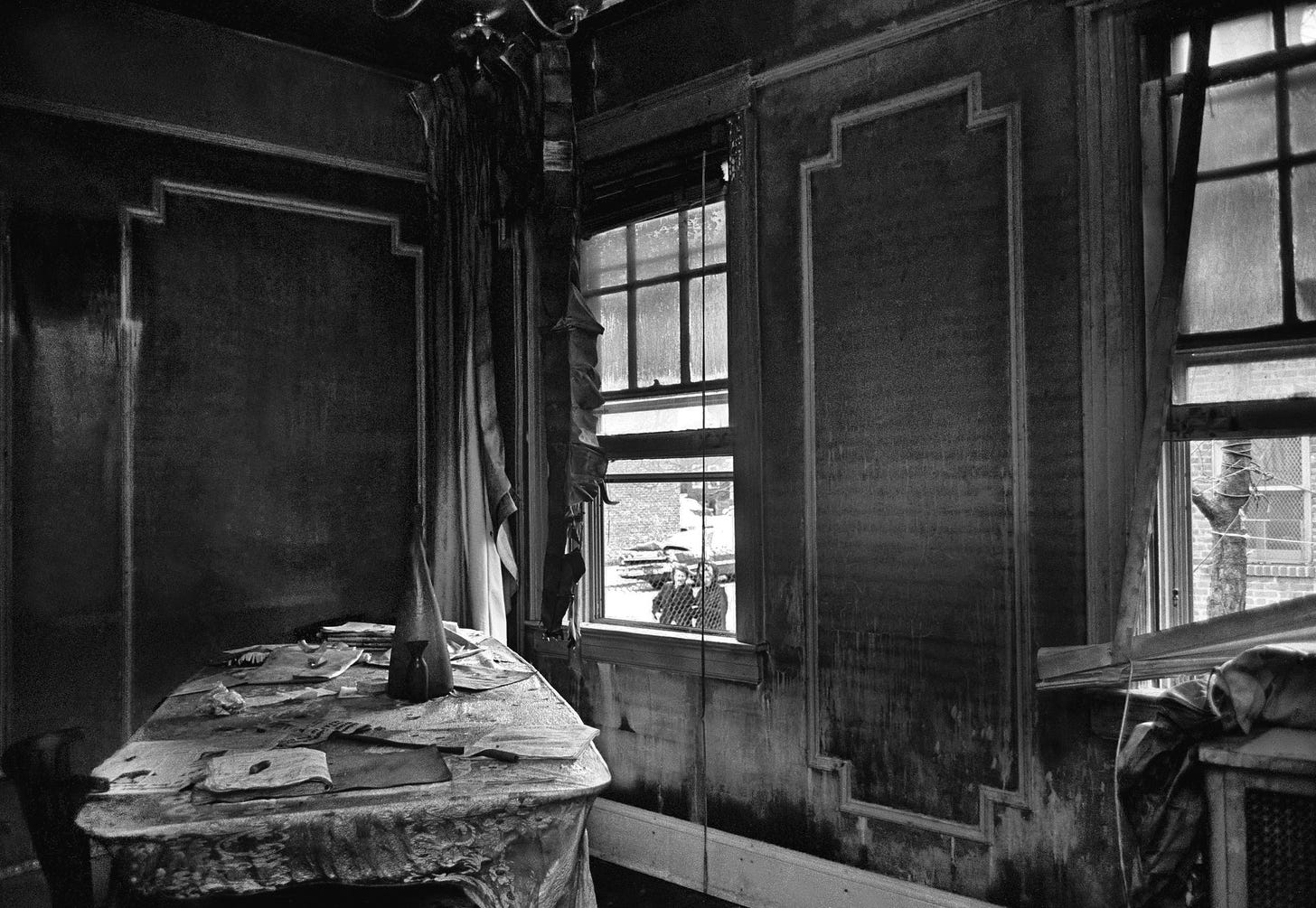
Until a few years ago, East Elmhurst had the least resident turnover of any neighborhood in the city. Recently, however, many of the area’s long-time African-American residents have moved out of the city, and the community is now nearly 65% Latino, with over half the residents being born in another country.
FAIR THEATER
The first building I ever photographed in East Elmhurst was the Fair Theater on Astoria Boulevard. The 600-seat Fair opened on Christmas Day, 1937, and was named after the nearby World’s Fair in Flushing Meadows.
It started as a discount movie theater and then, like many of the smaller neighborhood theaters that dot the city, became a pornography venue. When I photographed it, there were signs for upcoming Bollywood attractions, so it seemed like they had changed their business model.
Upon further investigation, however, it appears the Bollywood movies are just a front. While the theater screens Bollywood fare on the main screen, the rest of the theater has been carved up to include several smaller screens with adult titles. Private viewing booths equipped with full-length mirrors and free pizza, doughnuts, and coffee are among the rumored amenities.
The Bollywood movies are shown to comply with the 60/40 rule. As part of then-mayor Rudy Guliani’s attempt to de-sleaze Times Square in the mid-’90s, a new zoning law was passed prohibiting any establishment within 500 ft of a church or school from offering more than 40% adult material. This led to strip clubs offering Caesar salads and places like the Fair screening movies like Shahenshah and Aagaya Hero.
There is also an Italian restaurant, Stella D’Argento, next door with a connecting door to the theater.
Way back in 2009, Jordan D wrote on Yelp, “My family use to own this restaurant, but since we sold it, it's gone to s**t from what I've heard.” I think Jordan heard right.
The restaurant has been closed since 2014, though a sign in the window claims they will re-open soon.
The fact that even the cockroaches are going hungry suggests otherwise.
BETWEEN A ROCK AND A HAMPTON INN
Across from LaGuardia airport, nestled between a Hampton Inn and a Crowne Plaza Hotel, is a 1,000-ton granite pegmatite boulder. The massive rock, with its intertwined pink crystals of quartz and feldspar, has been there for over 12,000 years.
Attempts to excavate or blow up the boulder proved fruitless, and eventually, the hotels embraced their geological neighbor and even held a naming competition, christening it Pet Rock. That's where the trouble began.
Incensed locals, who fondly recall playing on the enormous boulder when it was the sole occupant of what was then an empty lot, took this “Pet Rock” designation as an affront. None of the kids who spent their youth clambering over the rock (including former AG Eric Holder) had ever called it Pet Rock, and if they had any say in the matter, no one else would either.
A petition was circulated. Signatures were collected, and eventually, after a re-dedication ceremony, the name was officially changed to Giant Rock.
Whatever you want to call it, I’m a big fan of this rock.
SIGHTS AND SOUNDS
As you may have guessed, this week’s field recording features lots of planes. Sadly, no frogs.
FEATURED PHOTOGRAPHER
I am not sure where I first saw David Rothenberg’s photos, but I remember feeling an immediate kinship with his way of looking at the world. Several locations where his photographs were taken were familiar, but seeing them through his eyes revealed things I hadn’t realized were there. His photos have a sense of the uncanny, with a strong undercurrent of humor that I find really compelling.
The project and book Landing Lights Park epitomize those qualities. The juxtaposition of impossibly close jet airliners against the humble architecture of the neighborhood is disorienting and hilarious at the same time.
Landing Lights Park looks at the Queens neighborhood that lies beneath the whining roar and shadows of jetliners landing at New York’s LaGuardia Airport. Aircraft descend over Landing Lights Park, a stretch of undeveloped land within the working class neighborhood of East Elmhurst, at intervals as frequent as every 90 seconds and as low as 150 feet above the ground, leaving behind a noxious backdrop of noise and polluted air for residents. My photographs explore this extraordinary intrusion within a landscape of the ordinary.
Head over to his site here to see the project and more of David’s work.
NOTES
I featured Joel Sternfeld’s Walking the High Line last week, and I’m going back for more today. Joel and Frank Gohlke’s Landscape as Longing is a pretty significant inspiration for this project, one which I will revisit in other Queens neighborhoods.
Walking in East Elmhurst, I knew I had seen this place before. The orange has faded, phone cards have replaced film, and road maps are no longer on offer, but the newsstand survives on this desolate stretch of Astoria Boulevard.
The strip mall north of 31st Avenue in East Elmhurst, Queens, looks like any other. There is the parking lot, cracked and huge. There is the Pearle Vision, the Curves, the Carvel, their signs at once garish and slightly forlorn. Not much would suggest, in other words, a portal to some of New York City’s most ethereal croissants, exquisite napoleons and a ruinously buttery rarity called a gâteau Breton.
If this write-up of East Elmhurst bakery, Cannelle Patisserie doesn’t get you excited, then I don’t know what to tell you. It got me excited, so I went on a Saturday morning to sample the goods, and it did not disappoint.
A street on 96th and 30th is named after Marguerite Henderson, a local hero who worked tirelessly to help feed and look after local East Elmhurst residents. Harry Belafonte and Willie Mays were both married to Marguerites. As the father of a Marguerite, maybe I should start looking at real estate listings. At the very least, I’ll be closer to the croissant portal.
There is also a Giant Rock in the Mojave desert, the largest freestanding boulder in the world. In the 1930s, an eccentric German with a fantastic name, Fritz Critzer, dug under the boulder and made his home there. He later blew himself up when under suspicion of being a German spy.
Soon after Critzer’s friend George Van Tassel moved into the subterranean abode, he claims he was visited by a Martian from Venus who invited him on board his spaceship and both verbally and telepathically gave him a technique for rejuvenating the human body.3 Van Tassel would go on to build the Integratron, "a time machine for basic research on rejuvenation, anti-gravity and time travel.” Giant Rock became a popular meeting spot for UFO enthusiasts. Pictures from its heyday resemble black and white stills from Wes Anderson’s Asteroid City.
I know this has absolutely nothing to do with NYC neighborhoods, but it’s a fantastic story, and when I found this photo by Bob Stephenson (!) I knew I had to include it.
https://www.nytimes.com/2005/03/28/nyregion/they-were-famous-admired-and-finally-welcome.html
https://en.wikipedia.org/wiki/George_Van_Tassel

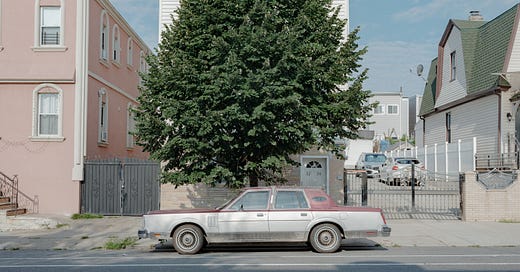


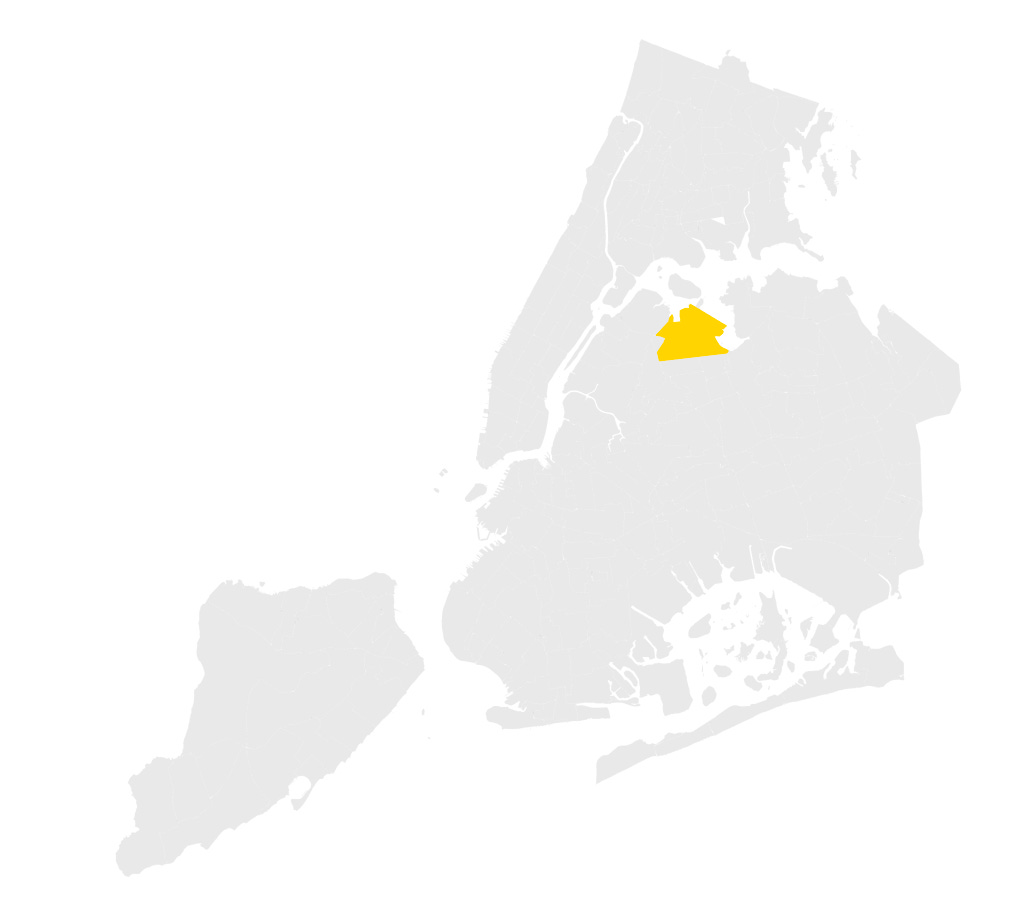
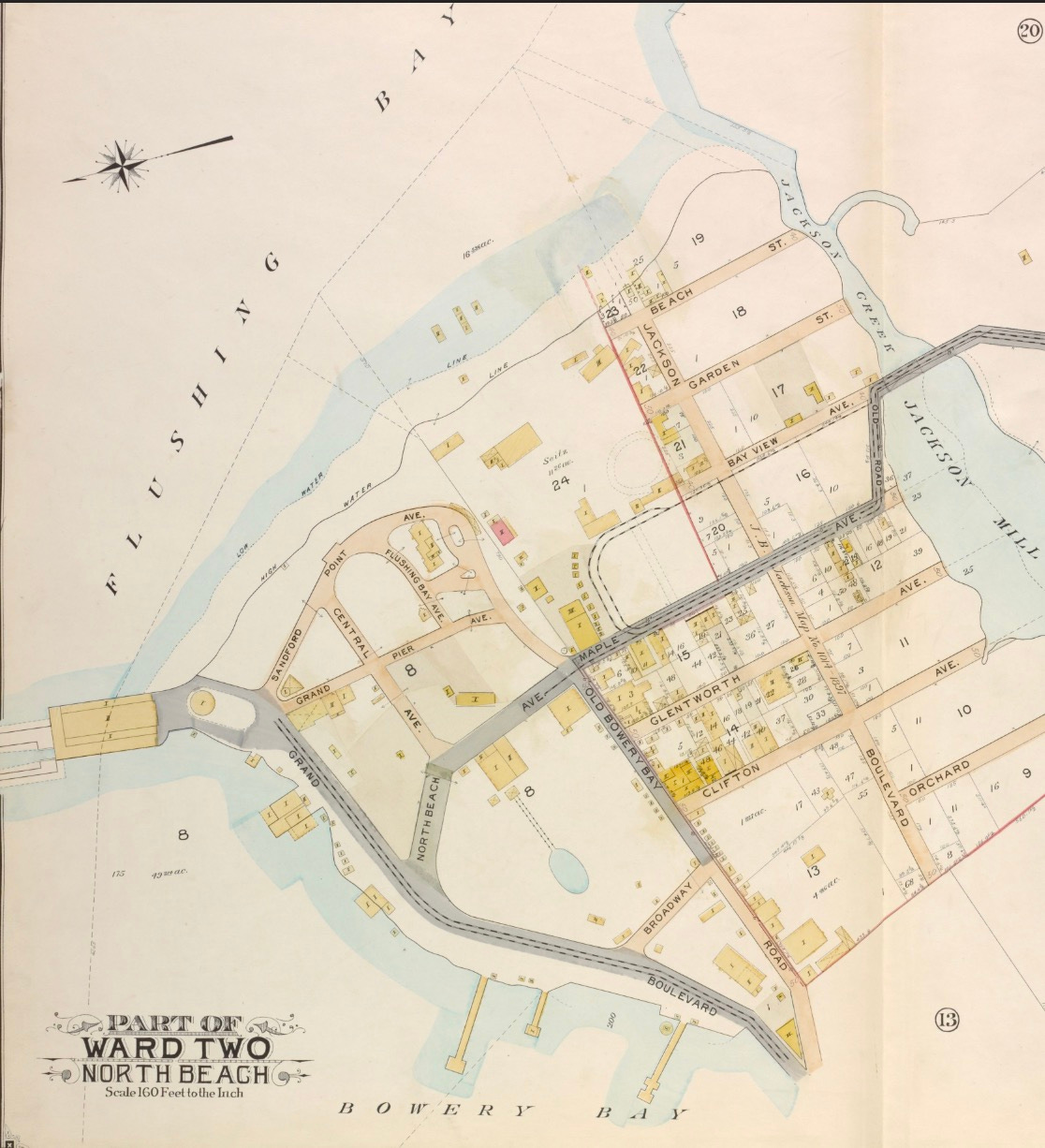
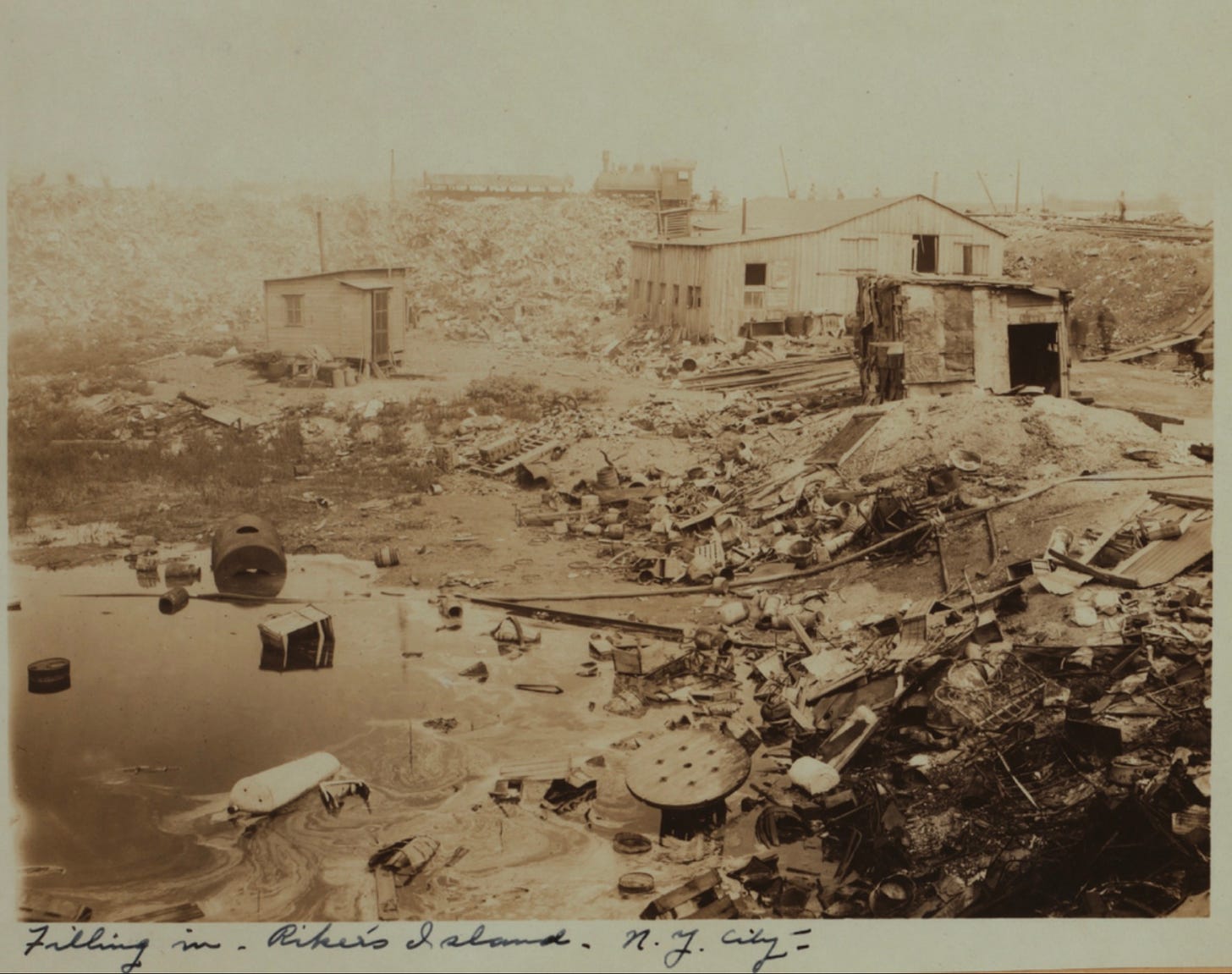
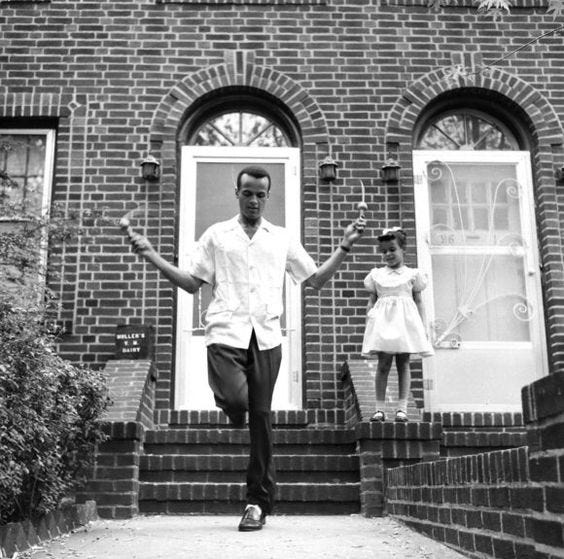

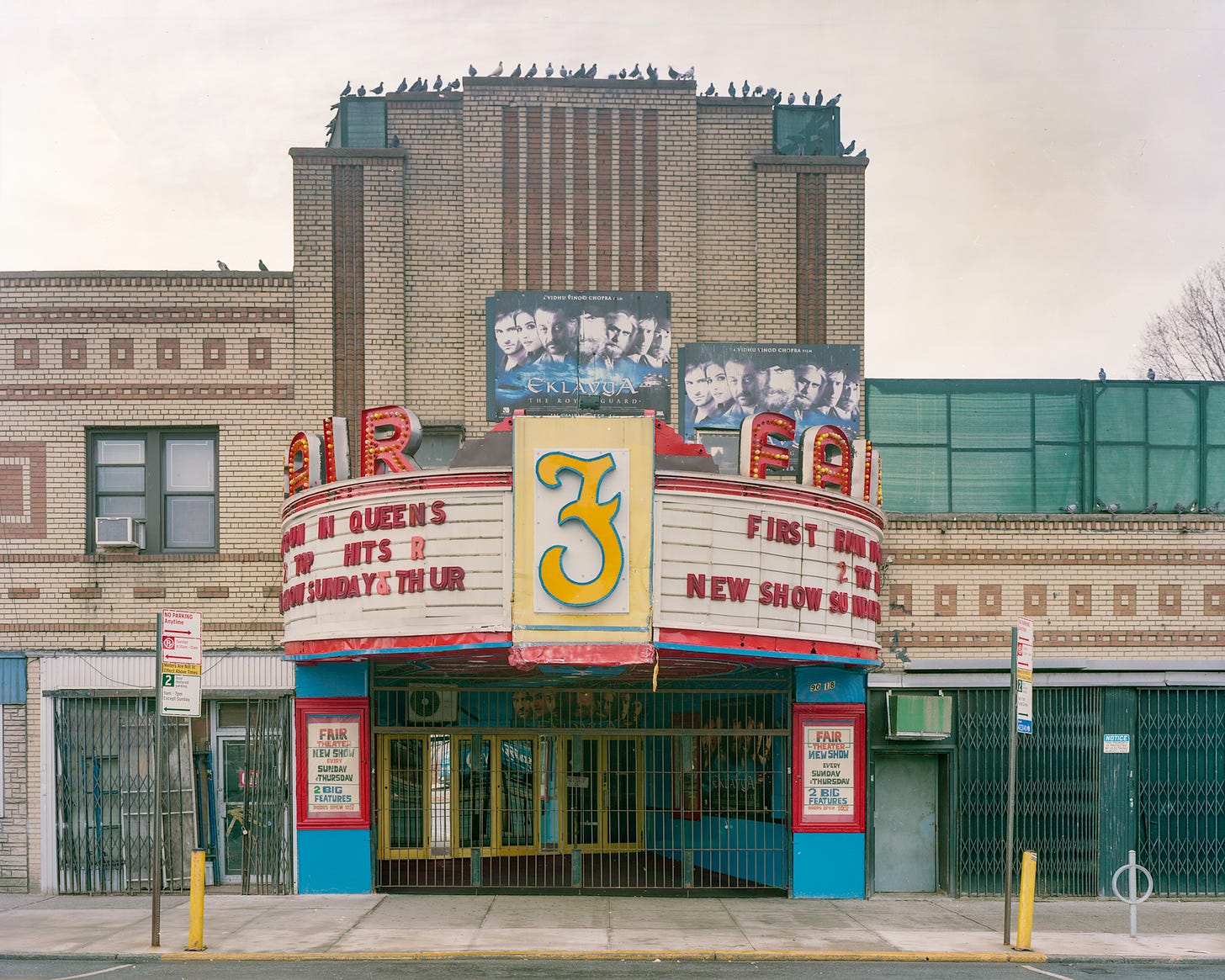

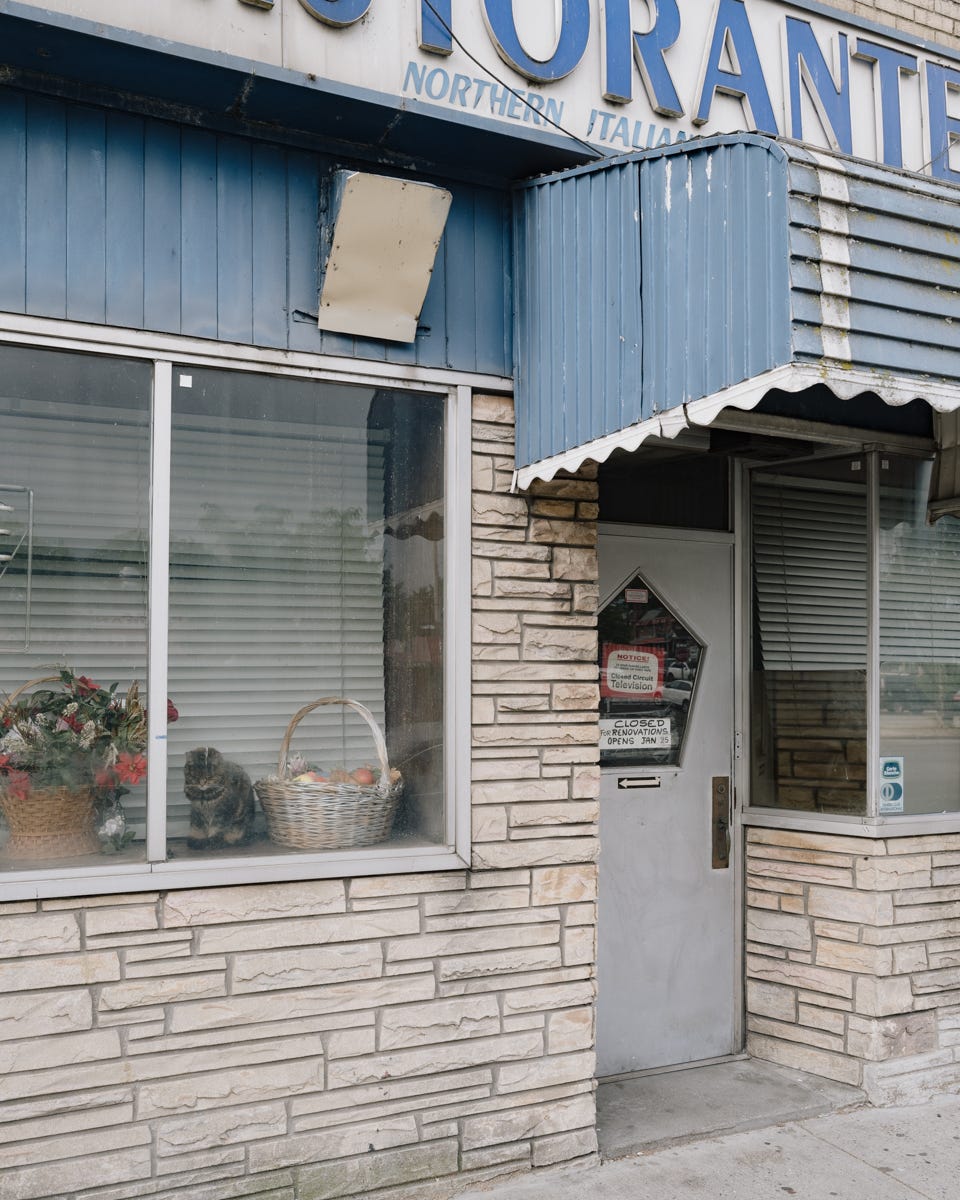
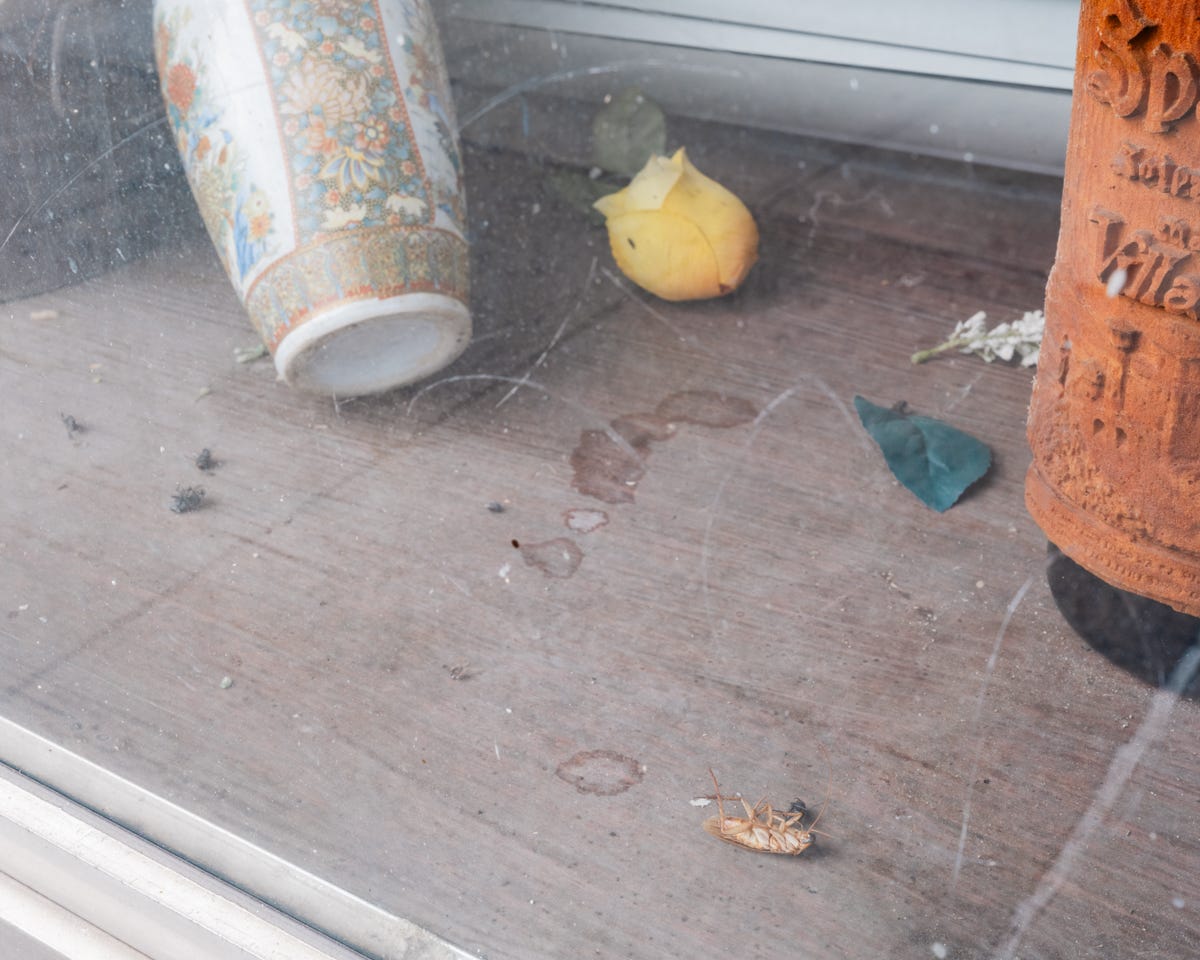
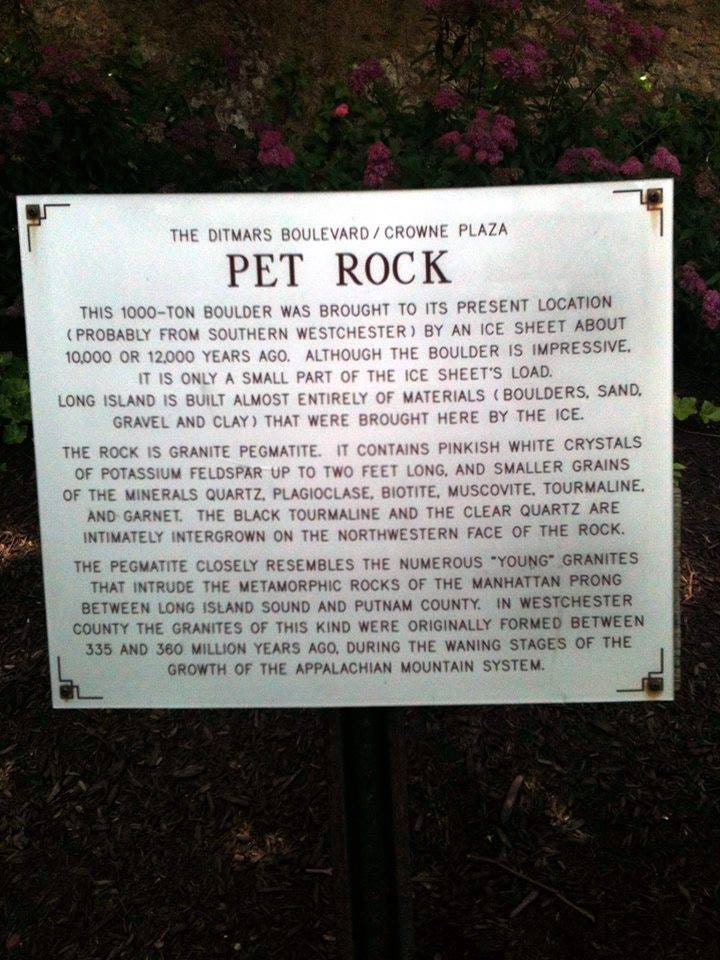
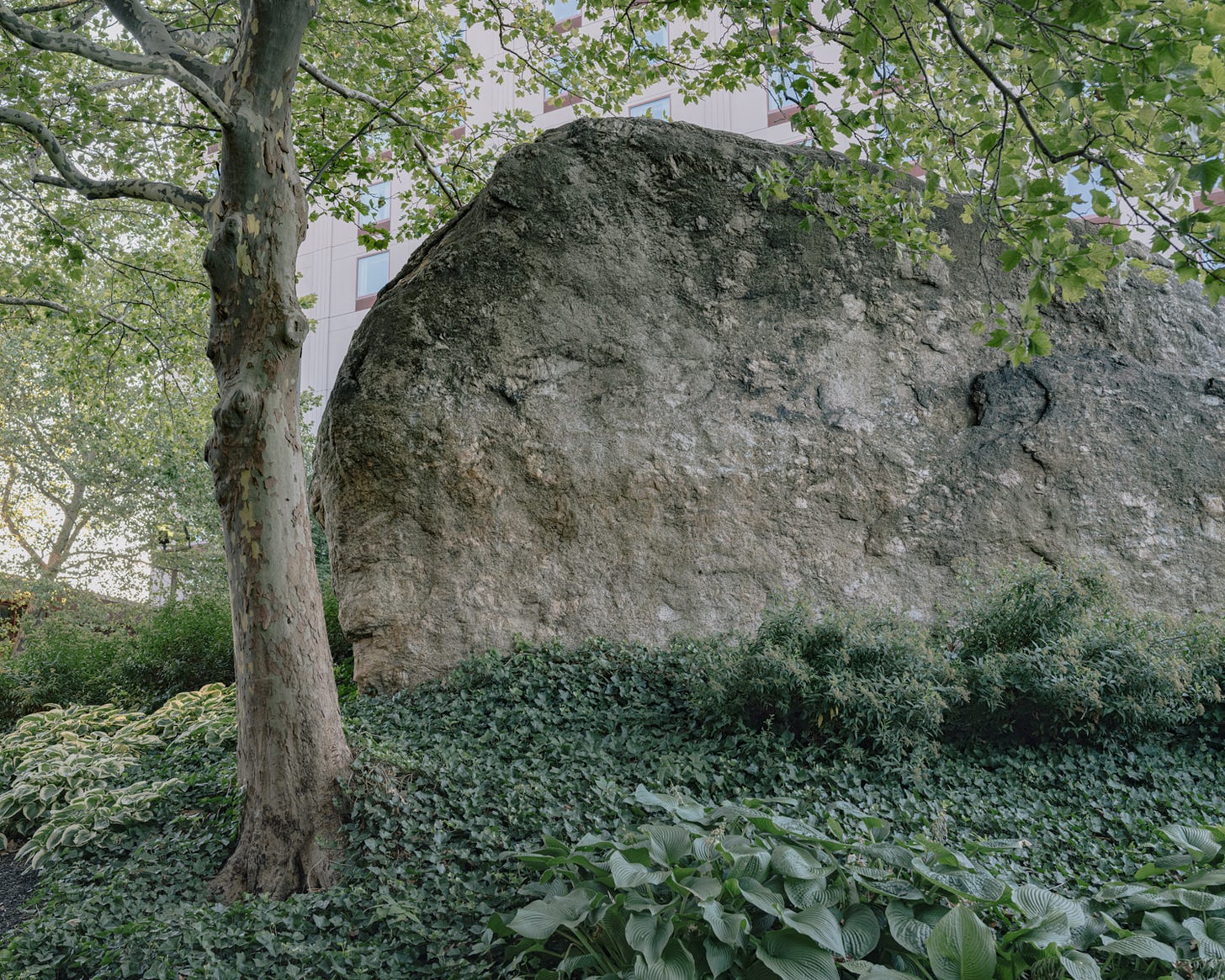
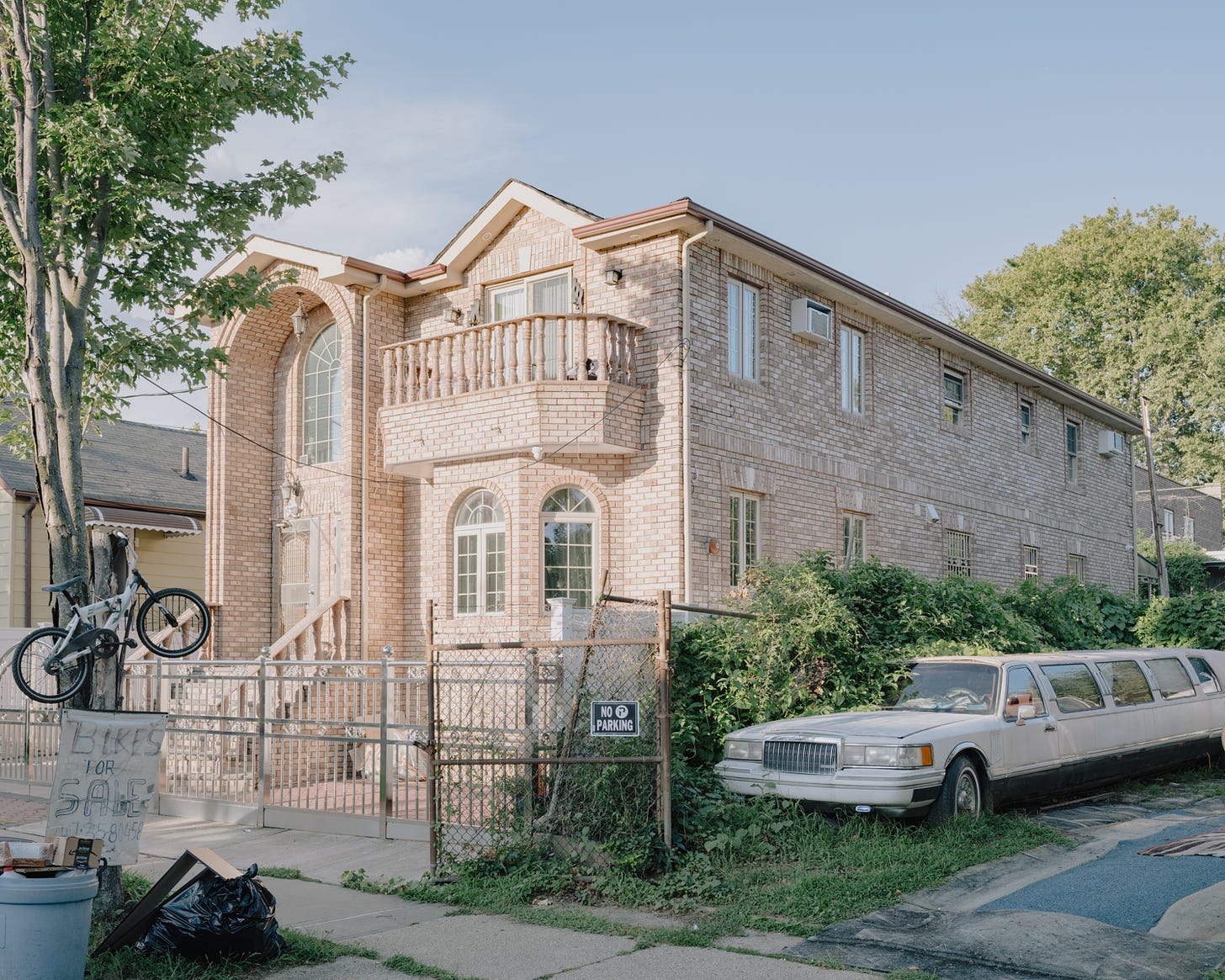
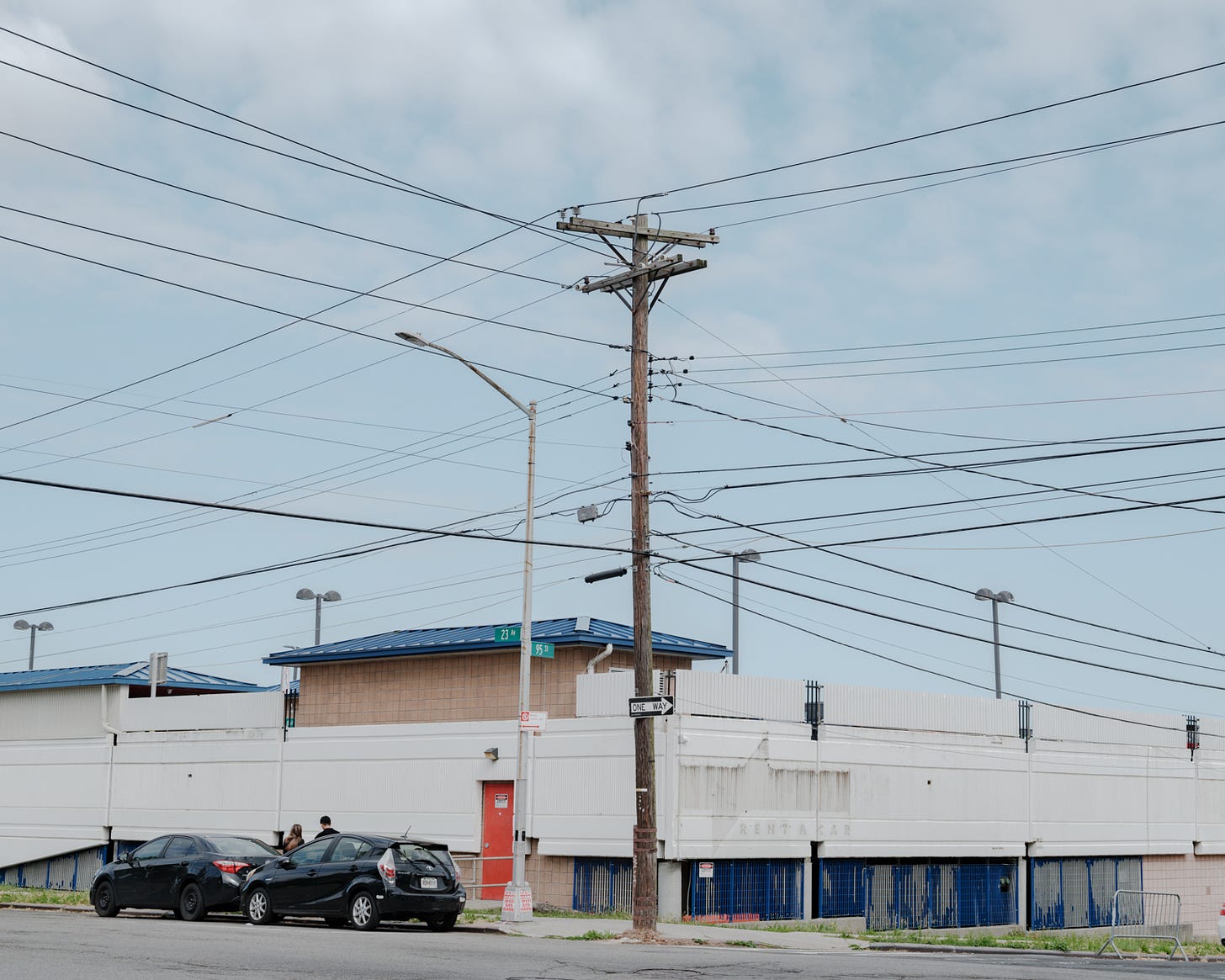

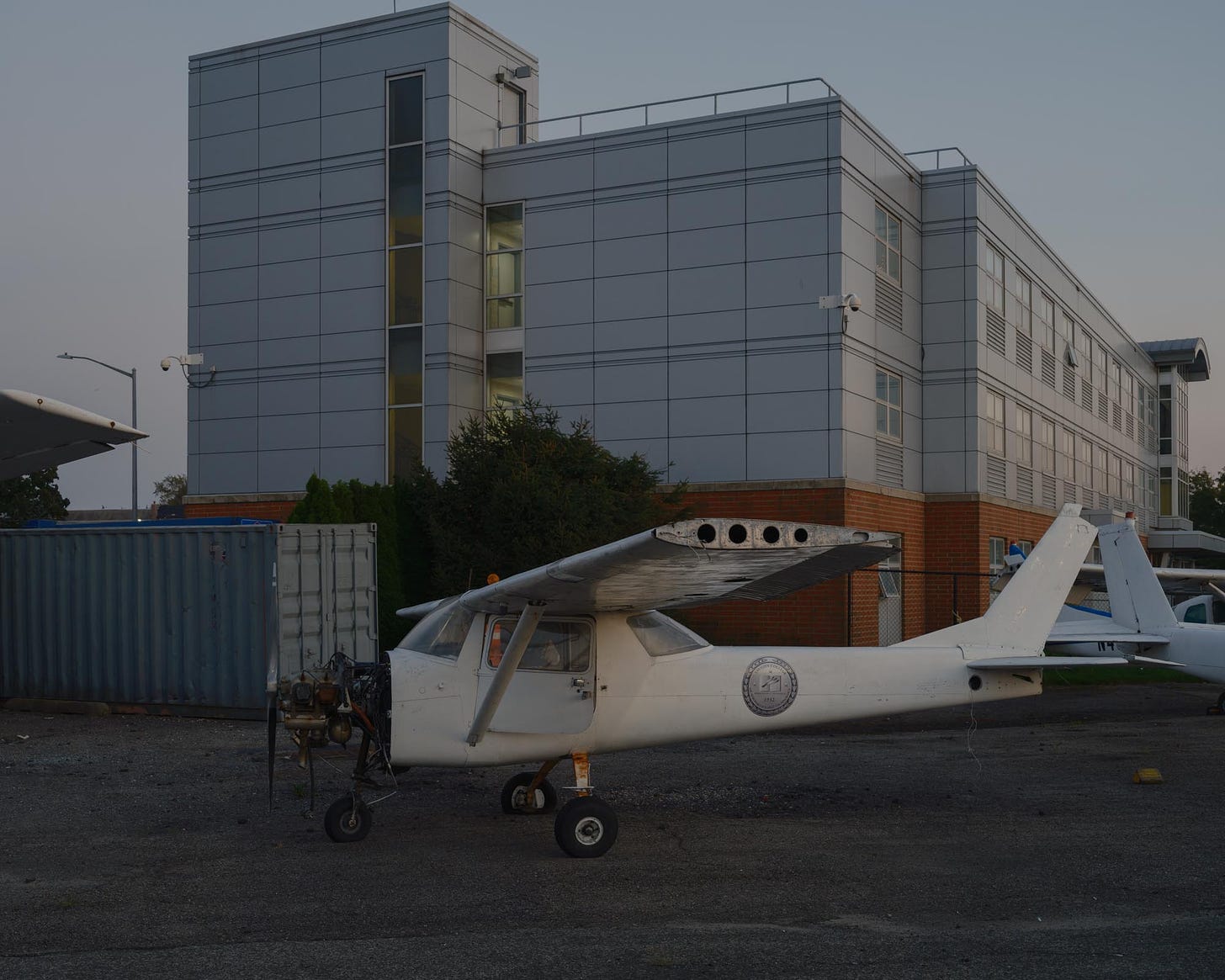
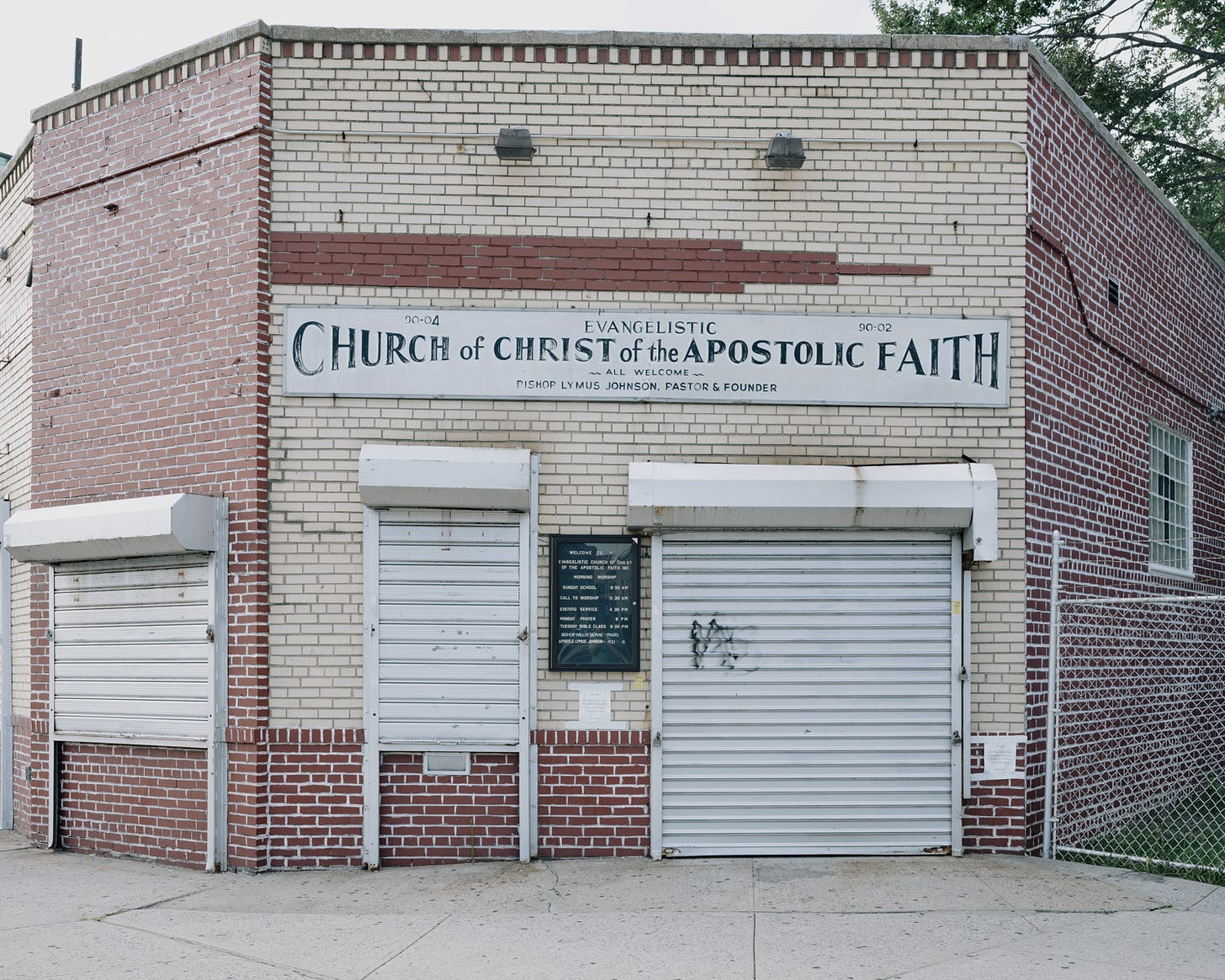
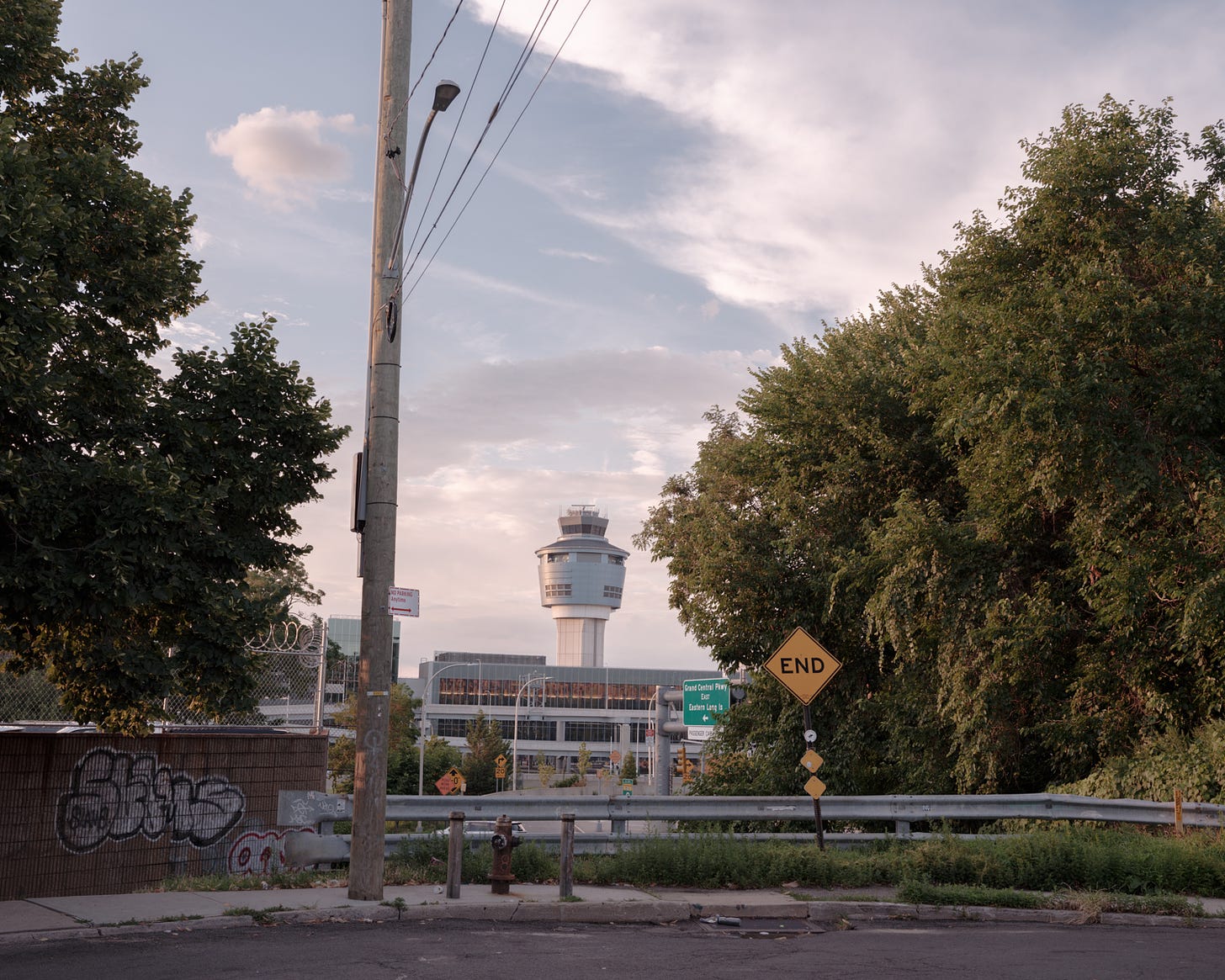
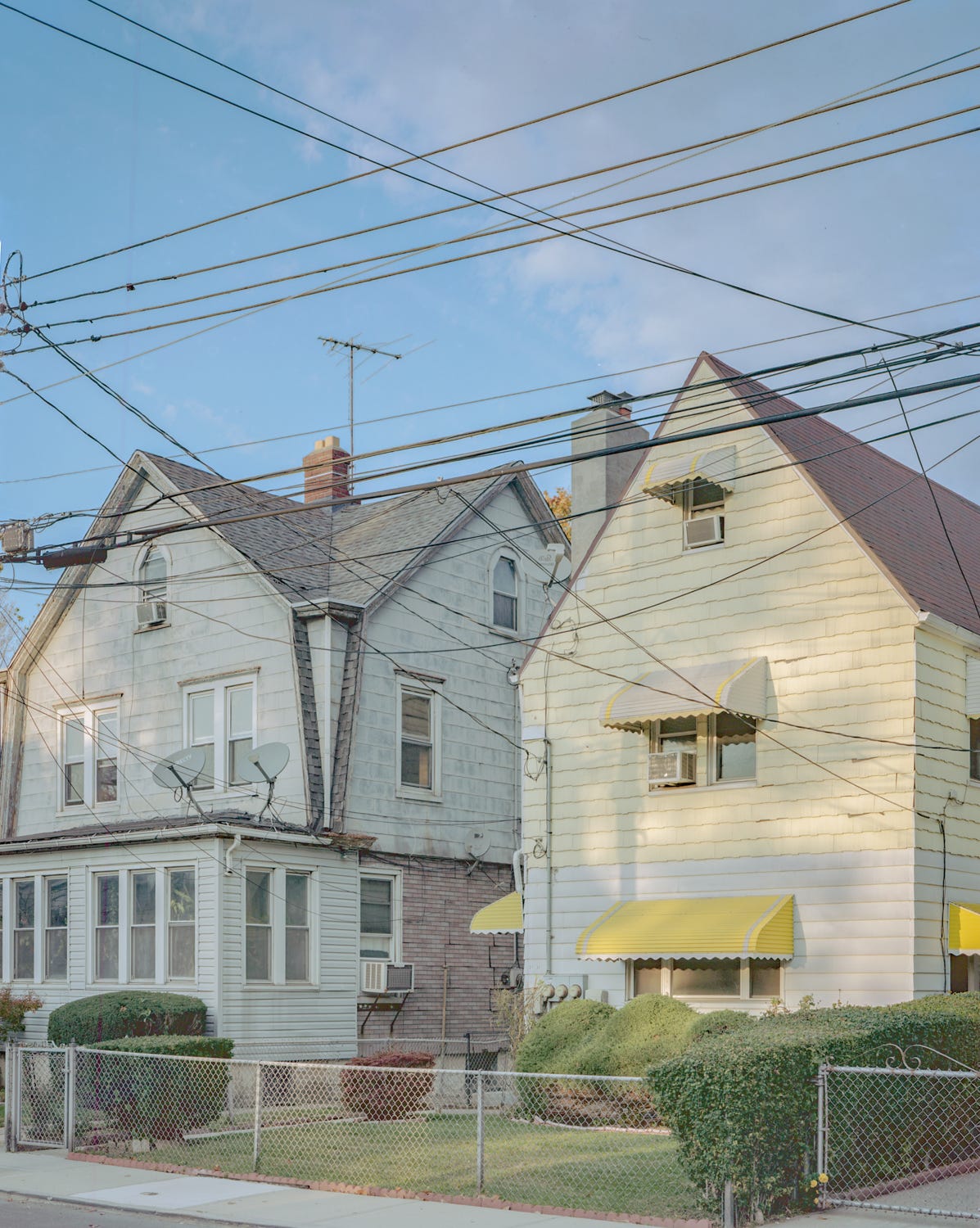
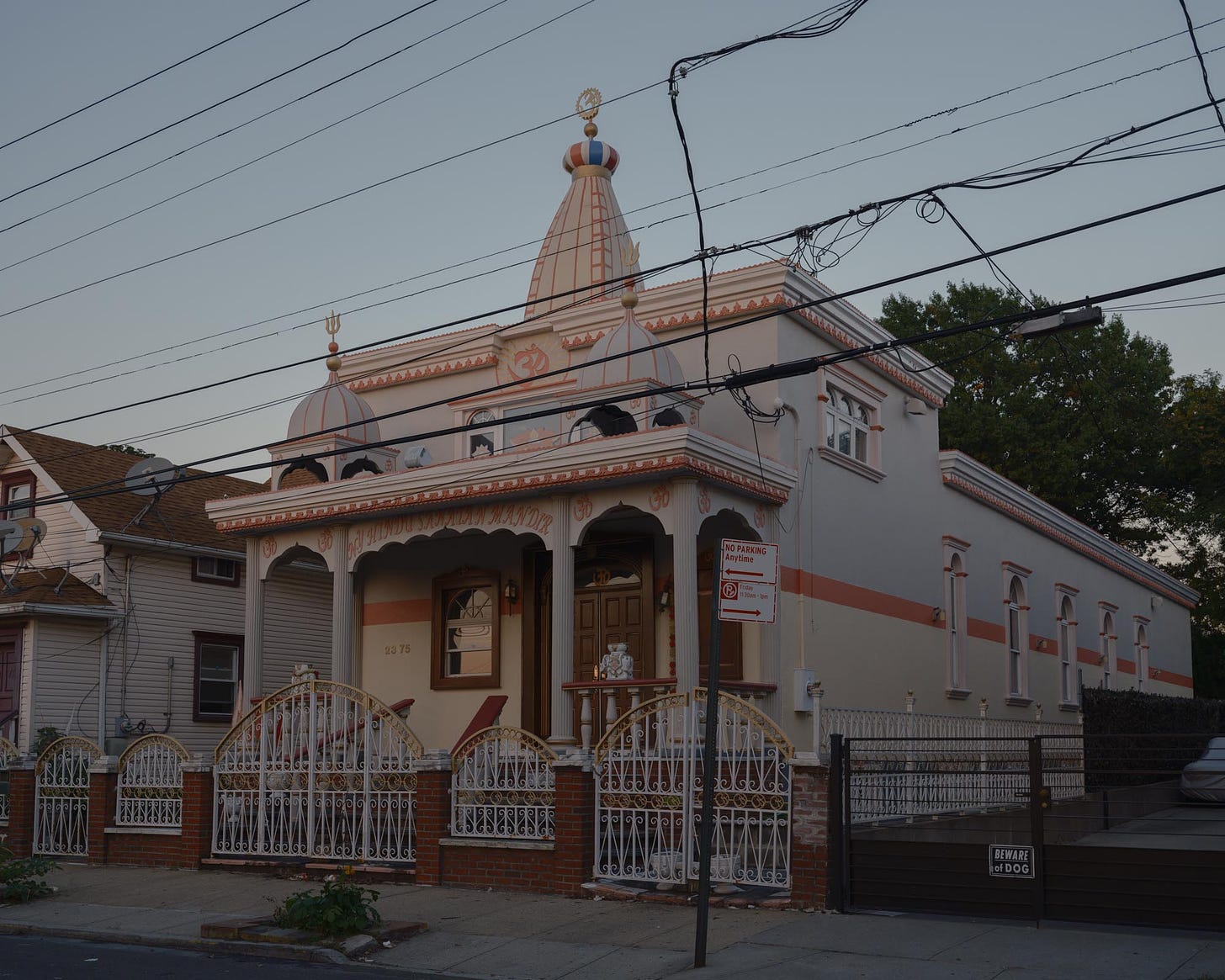
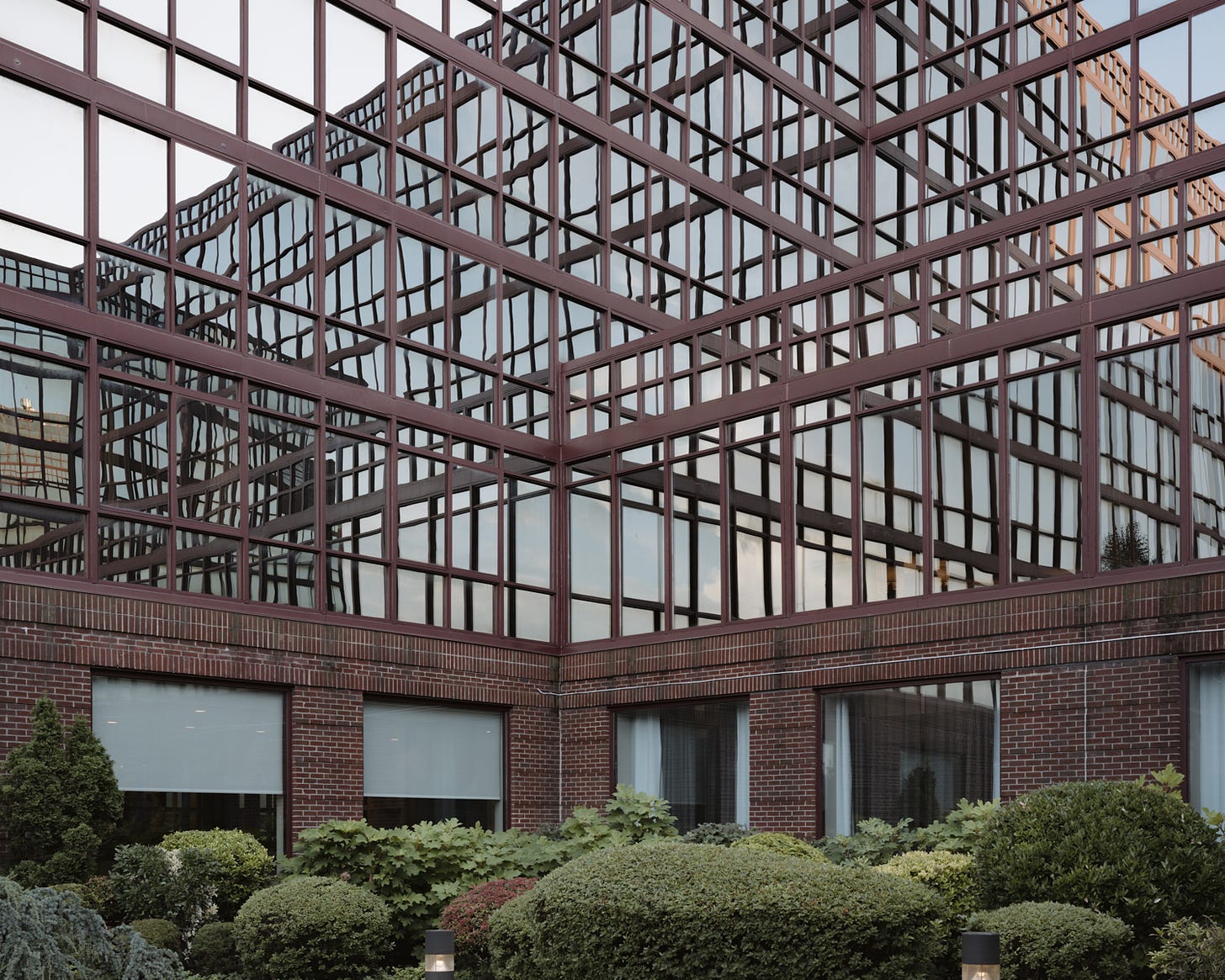
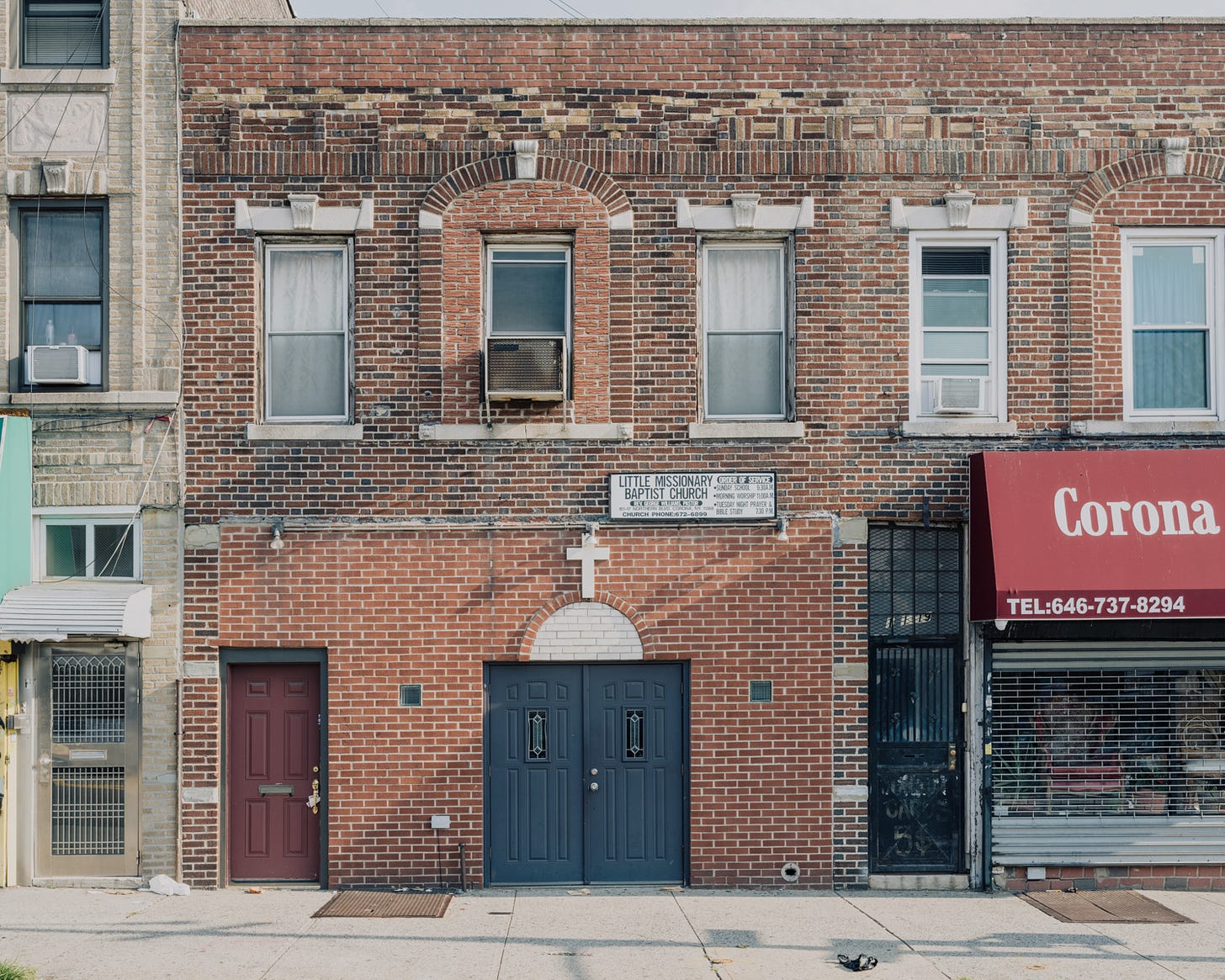
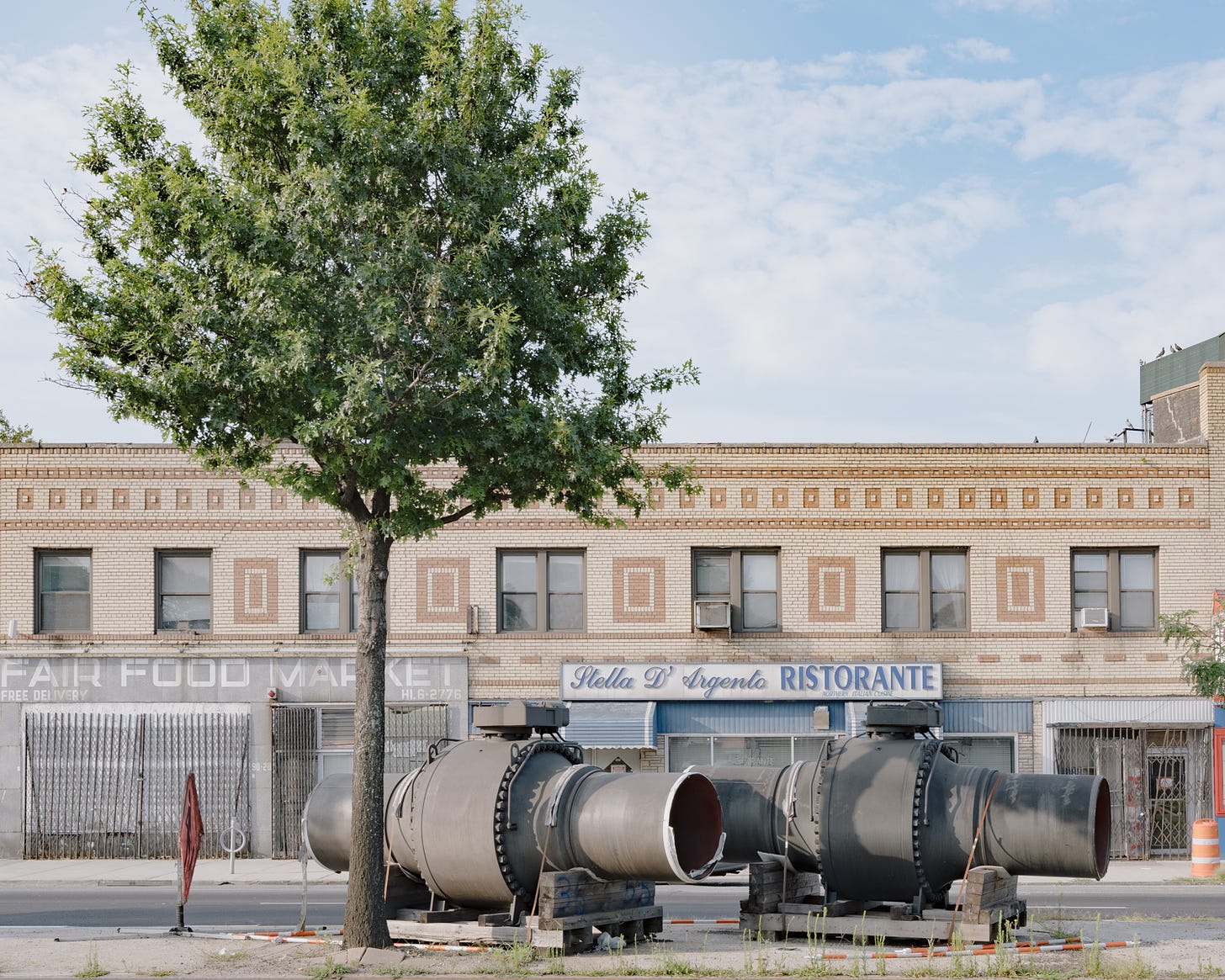
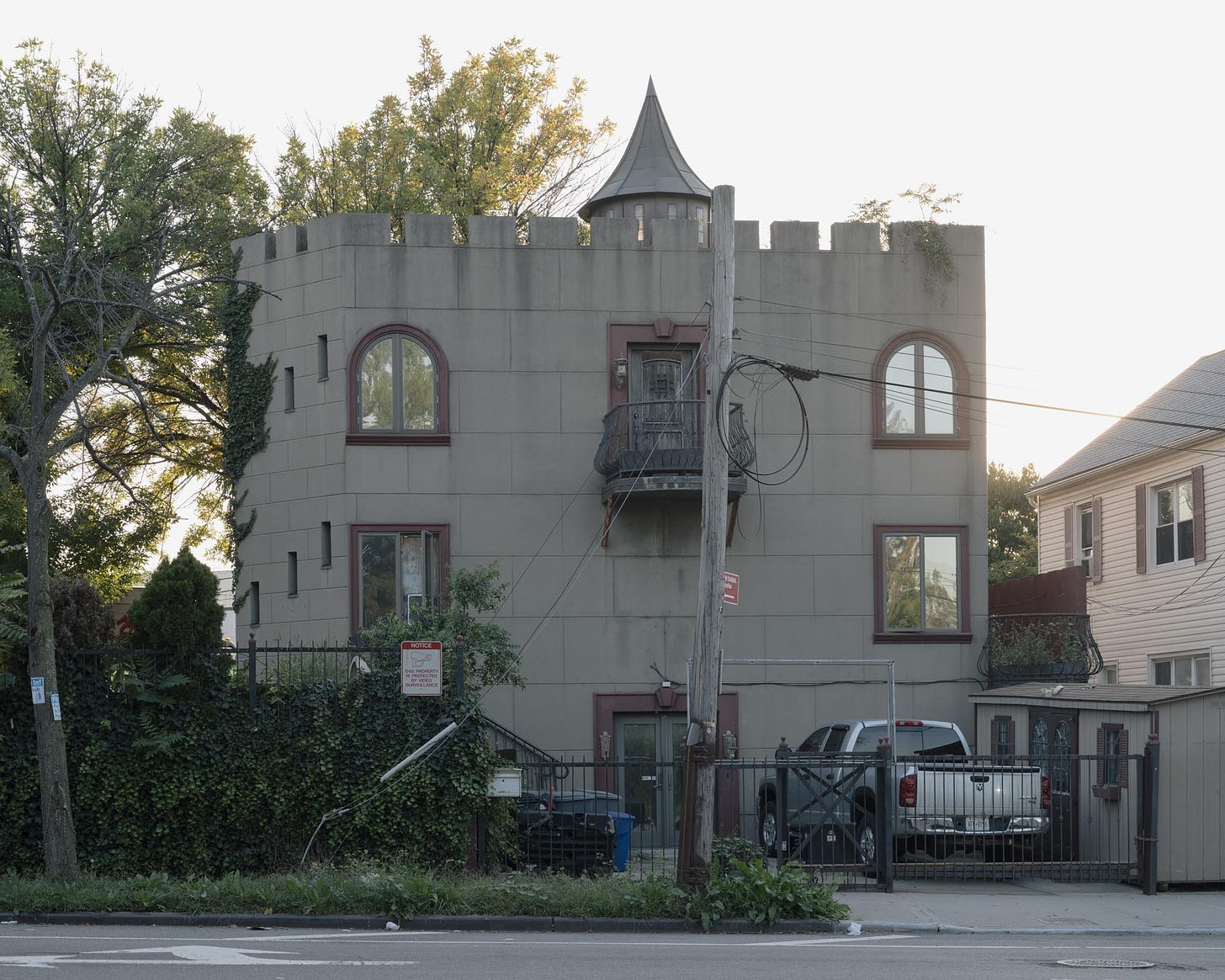
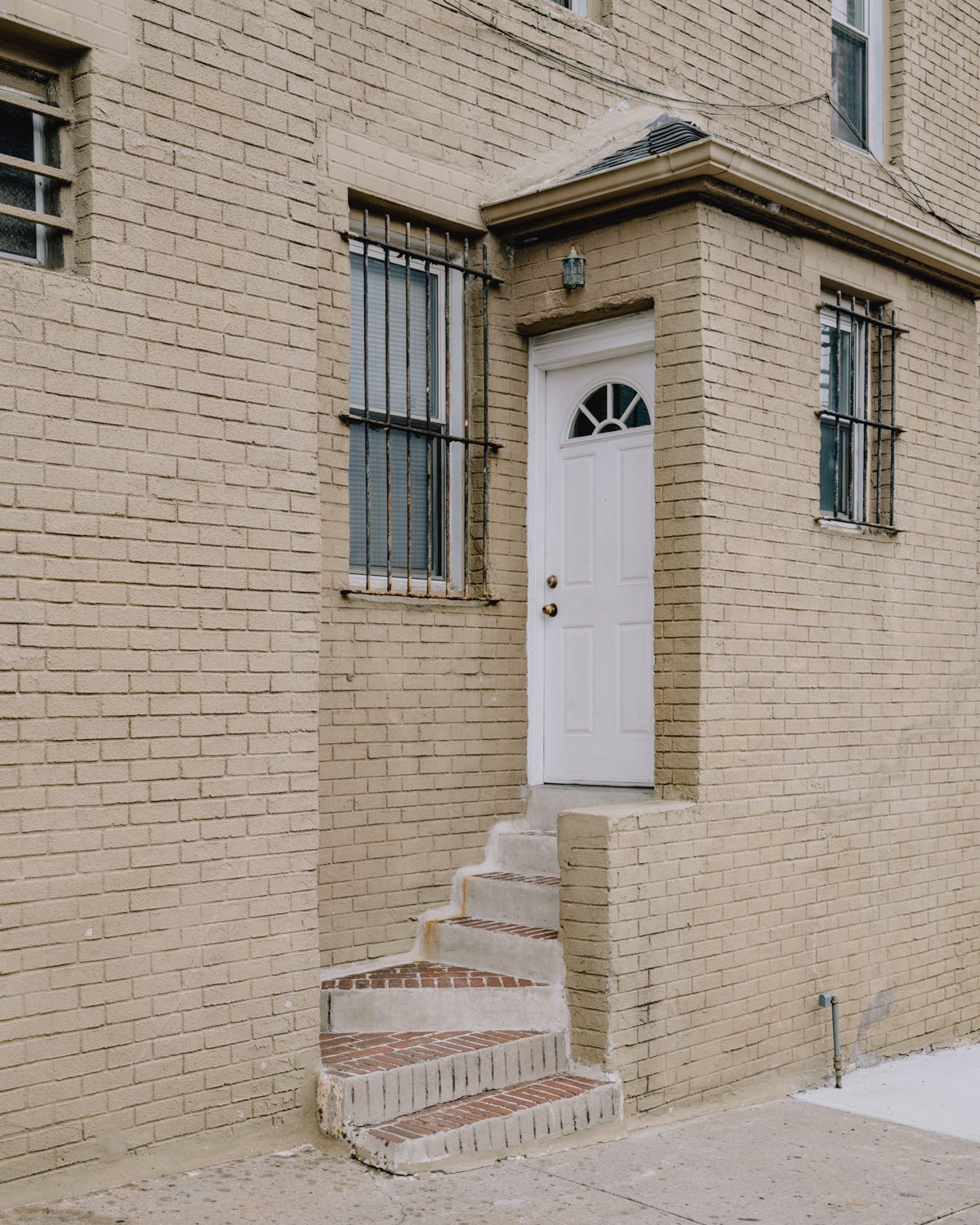
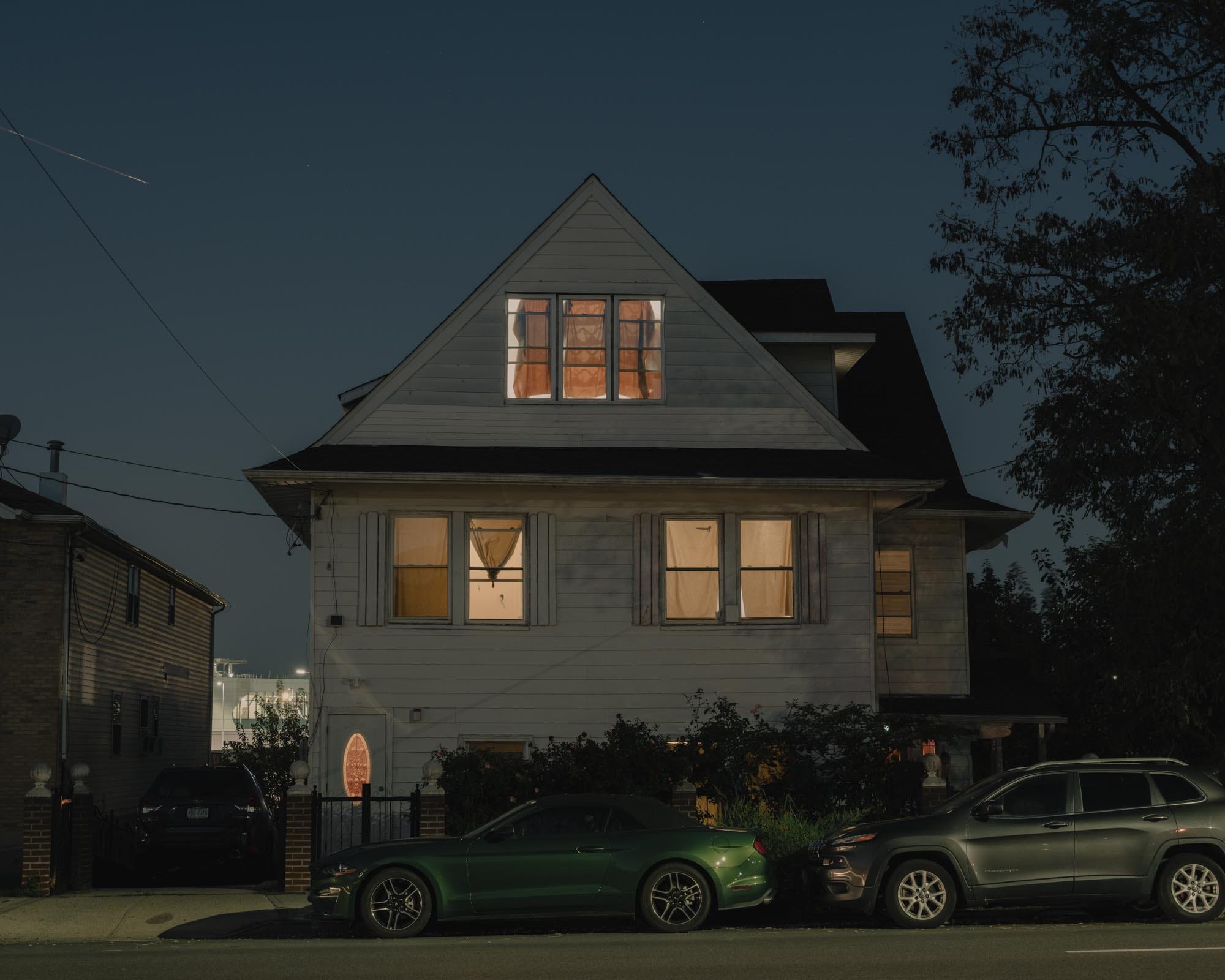
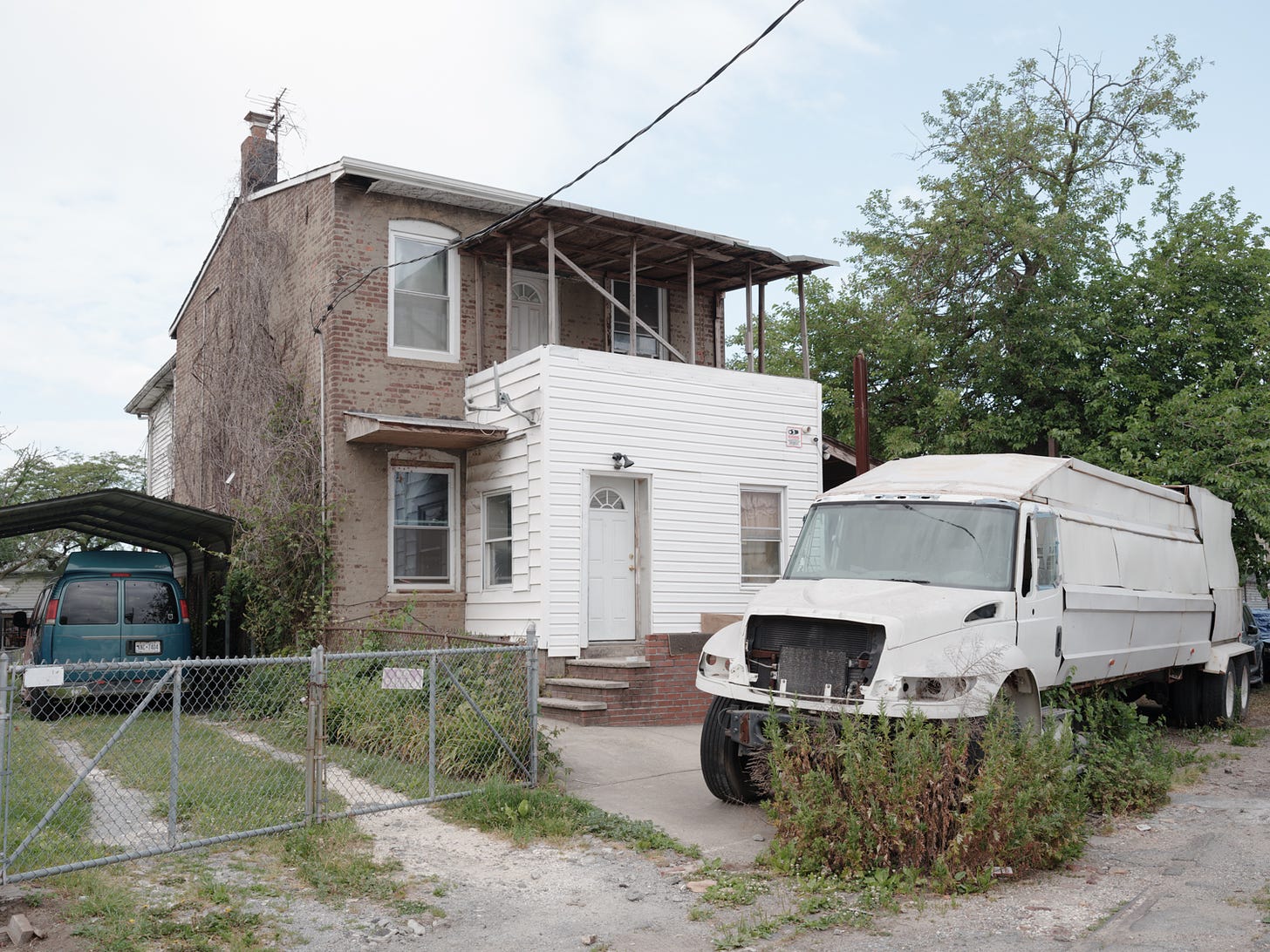
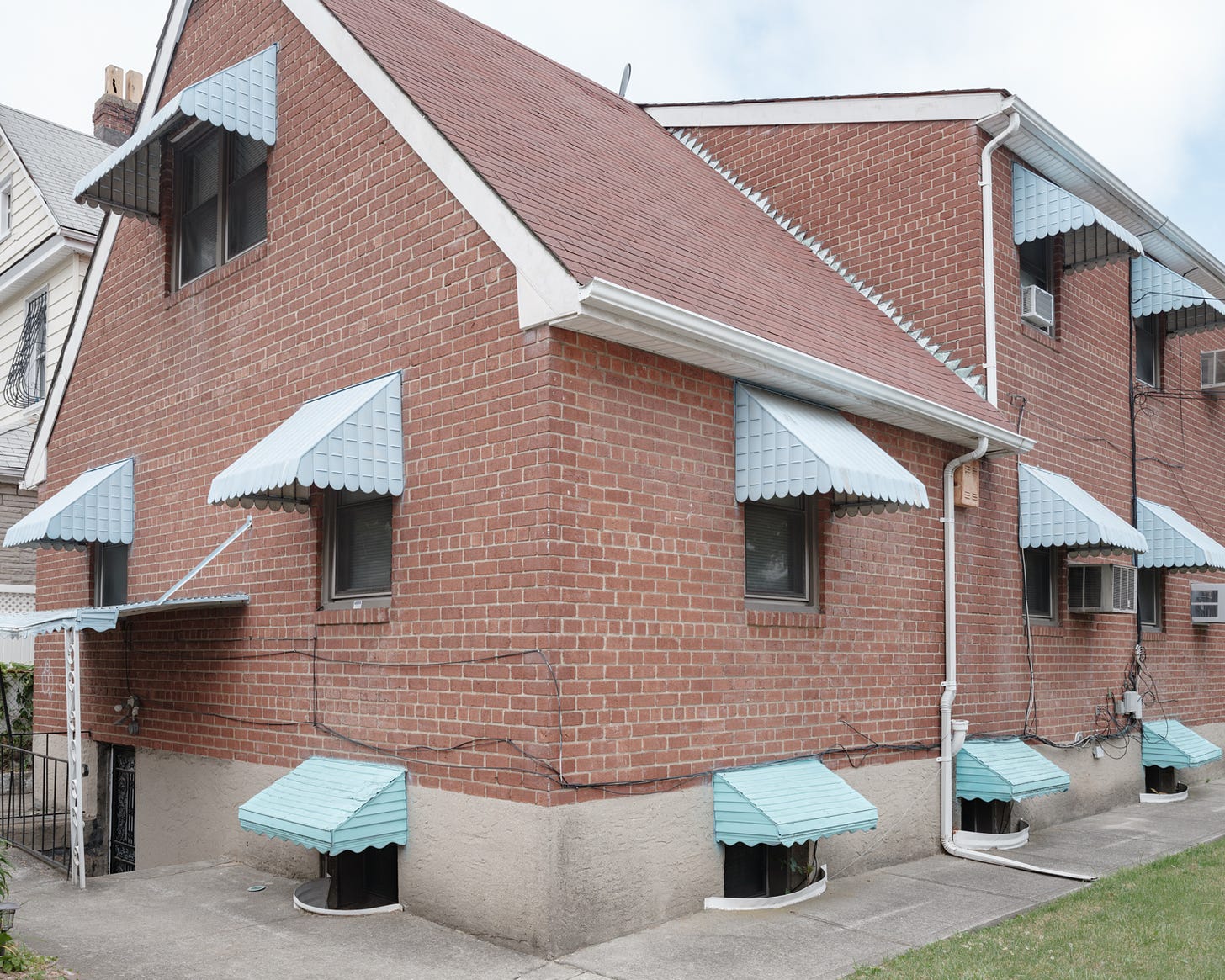
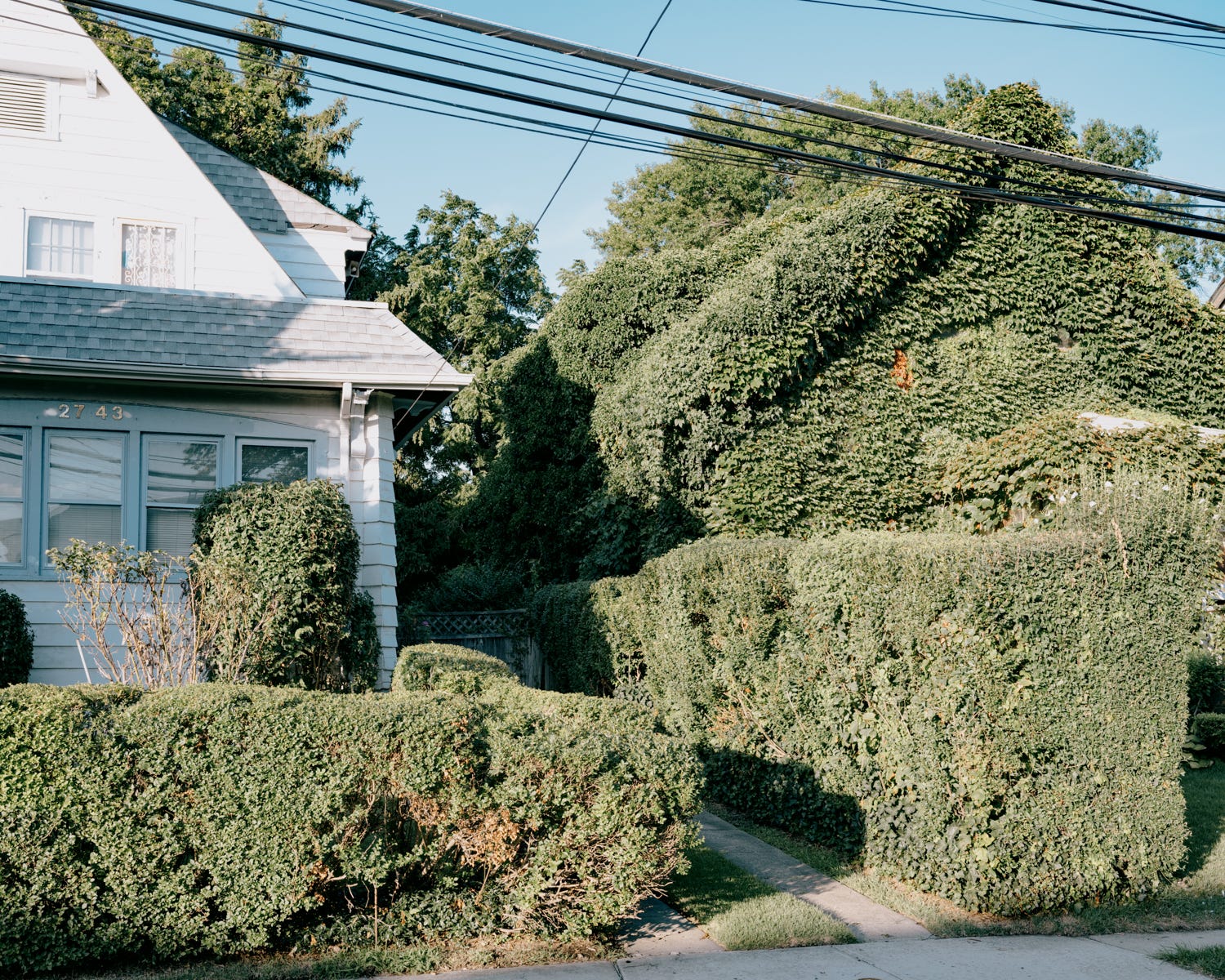

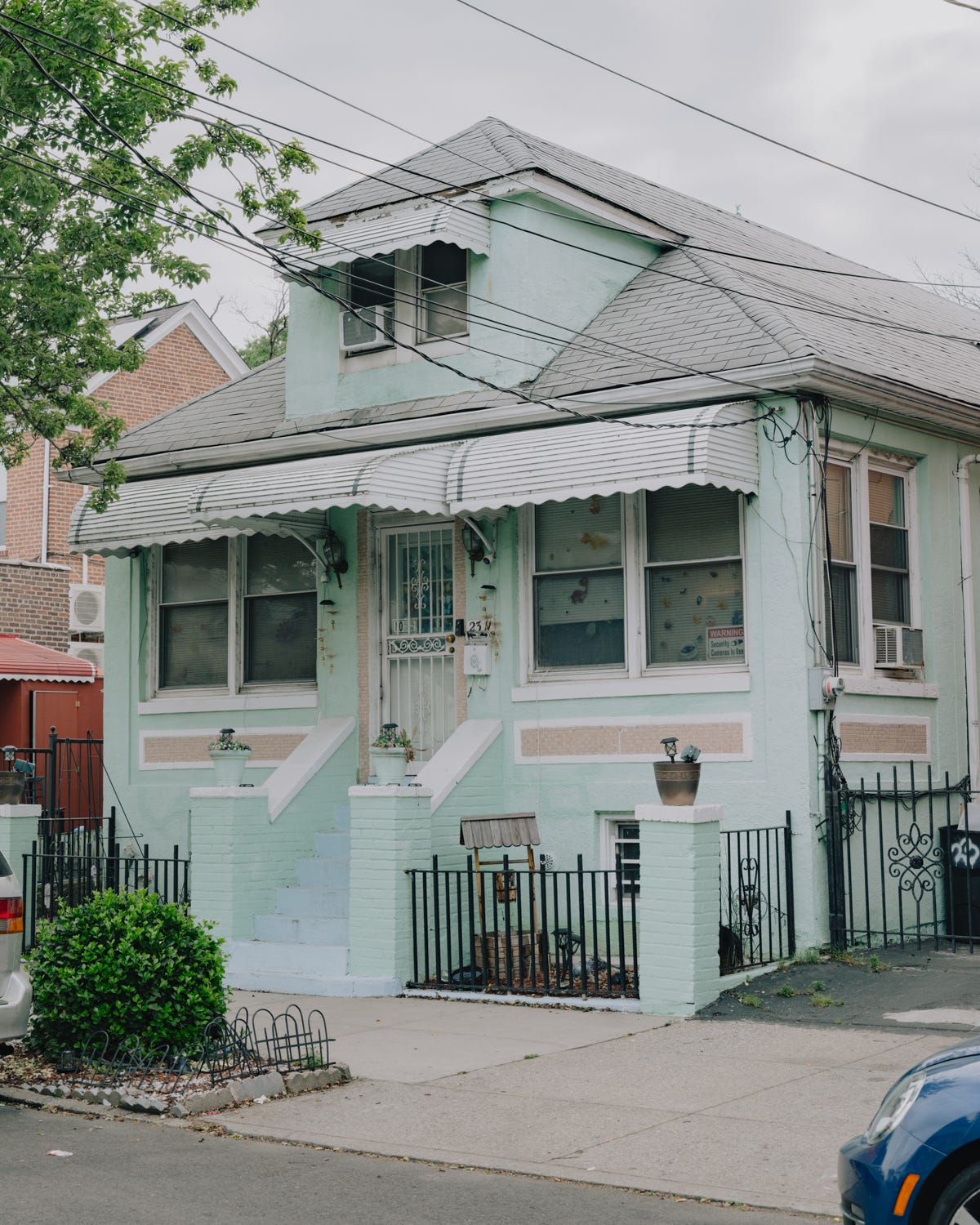
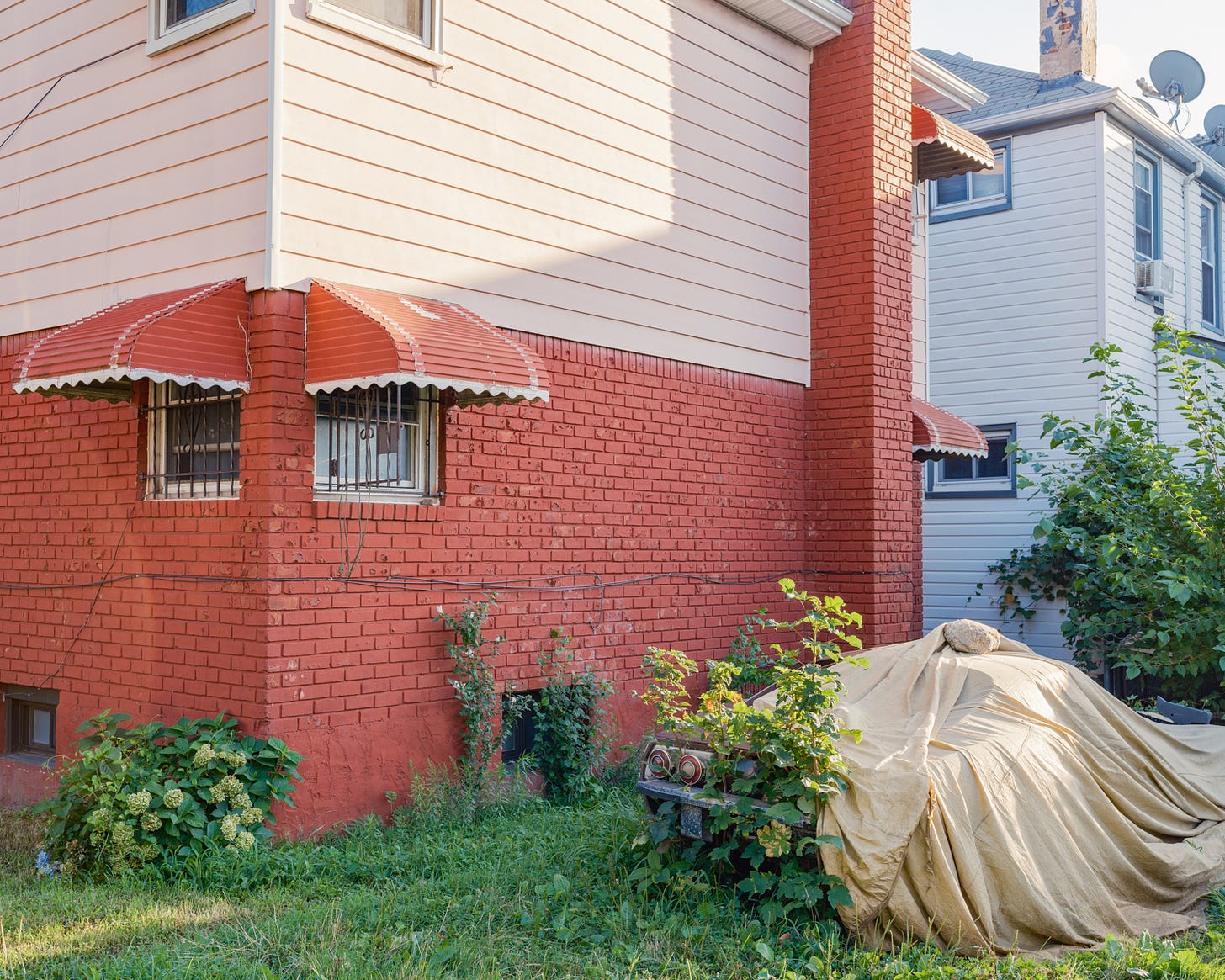
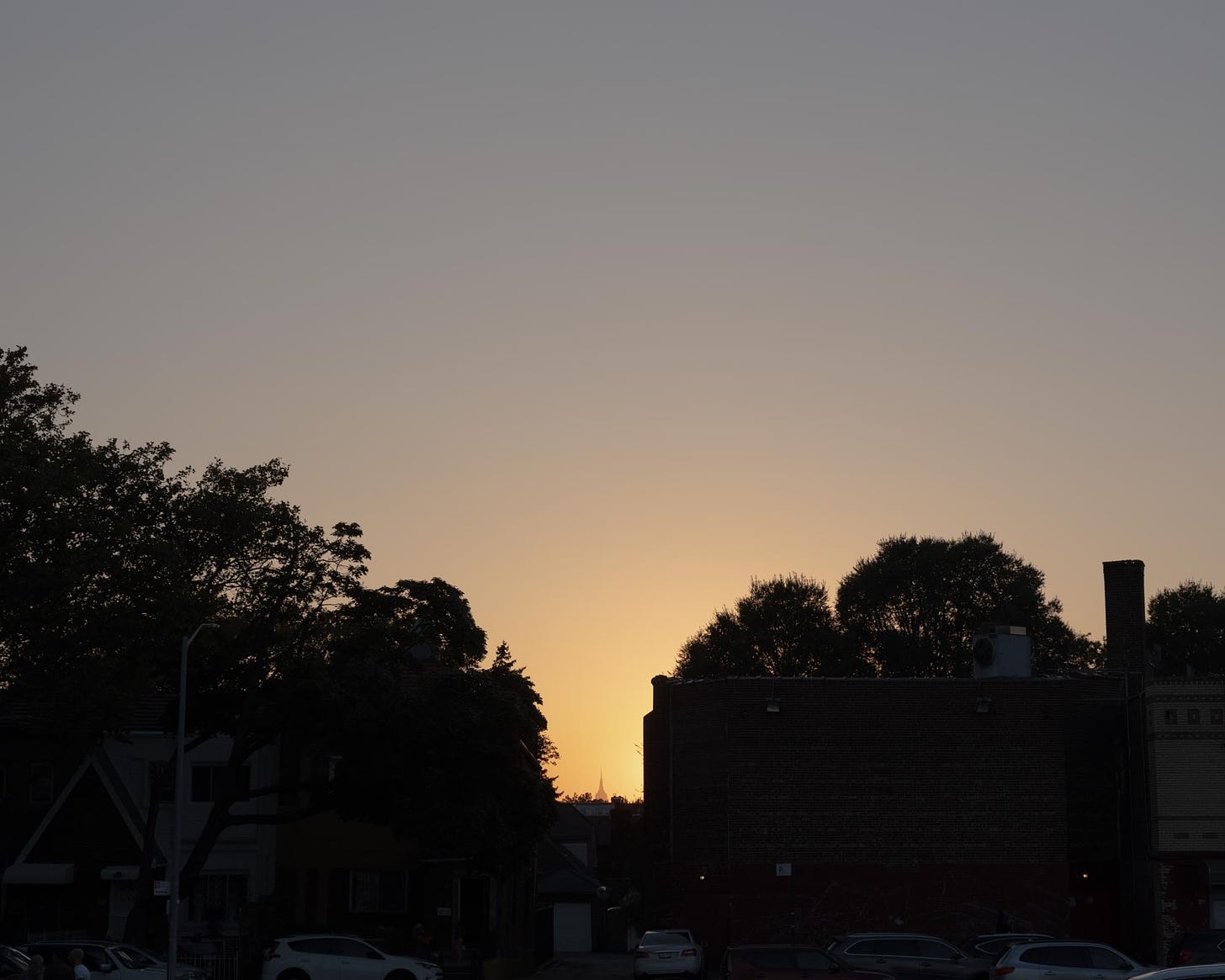
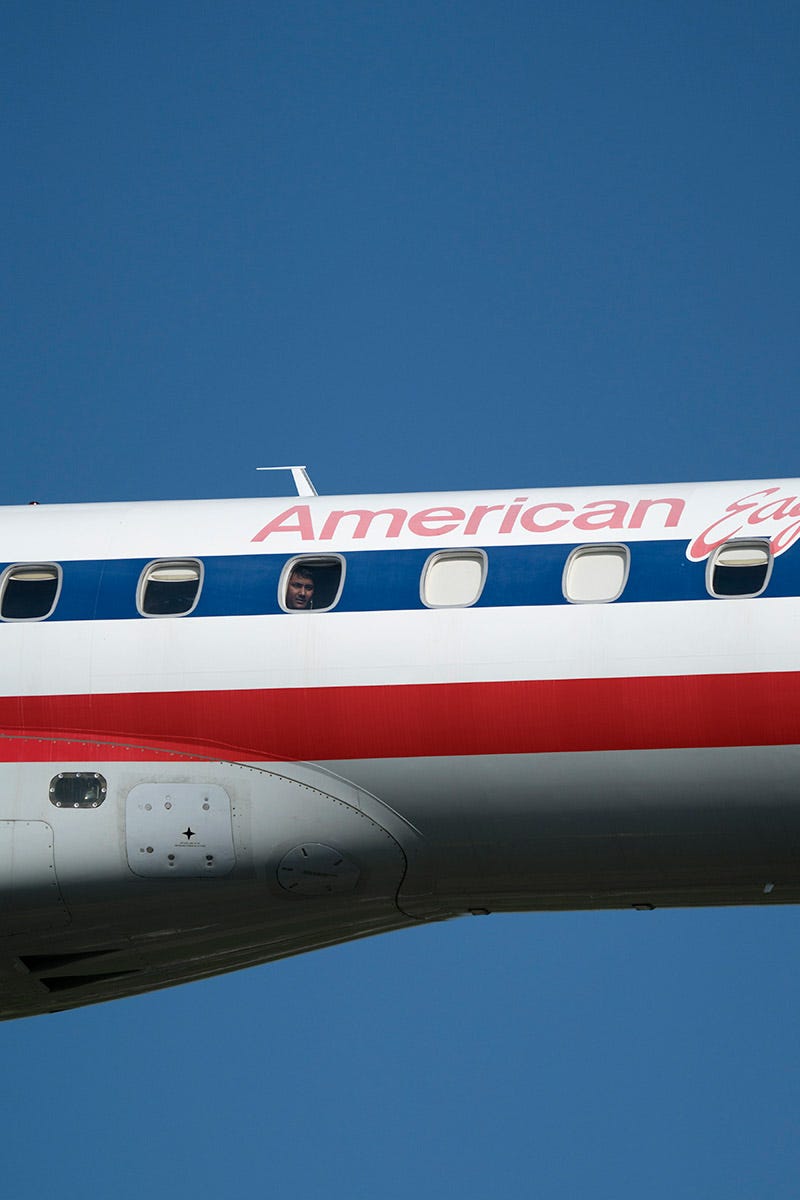
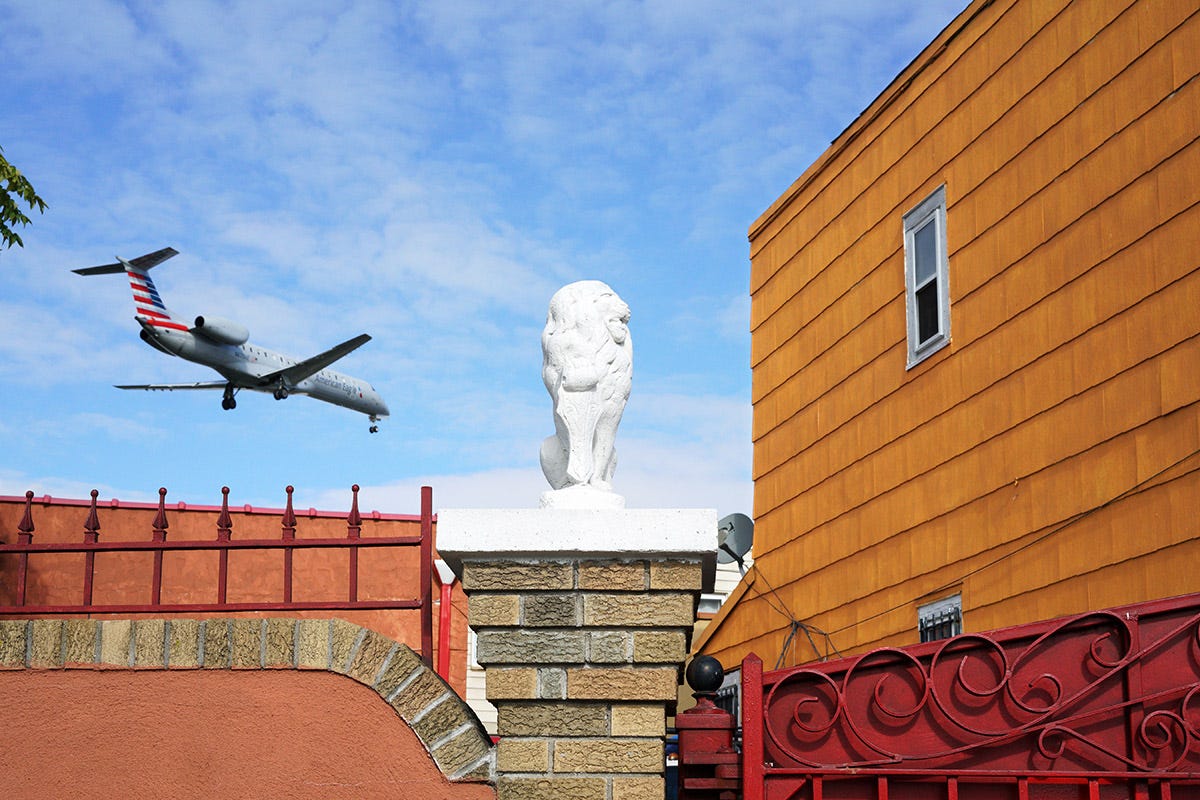
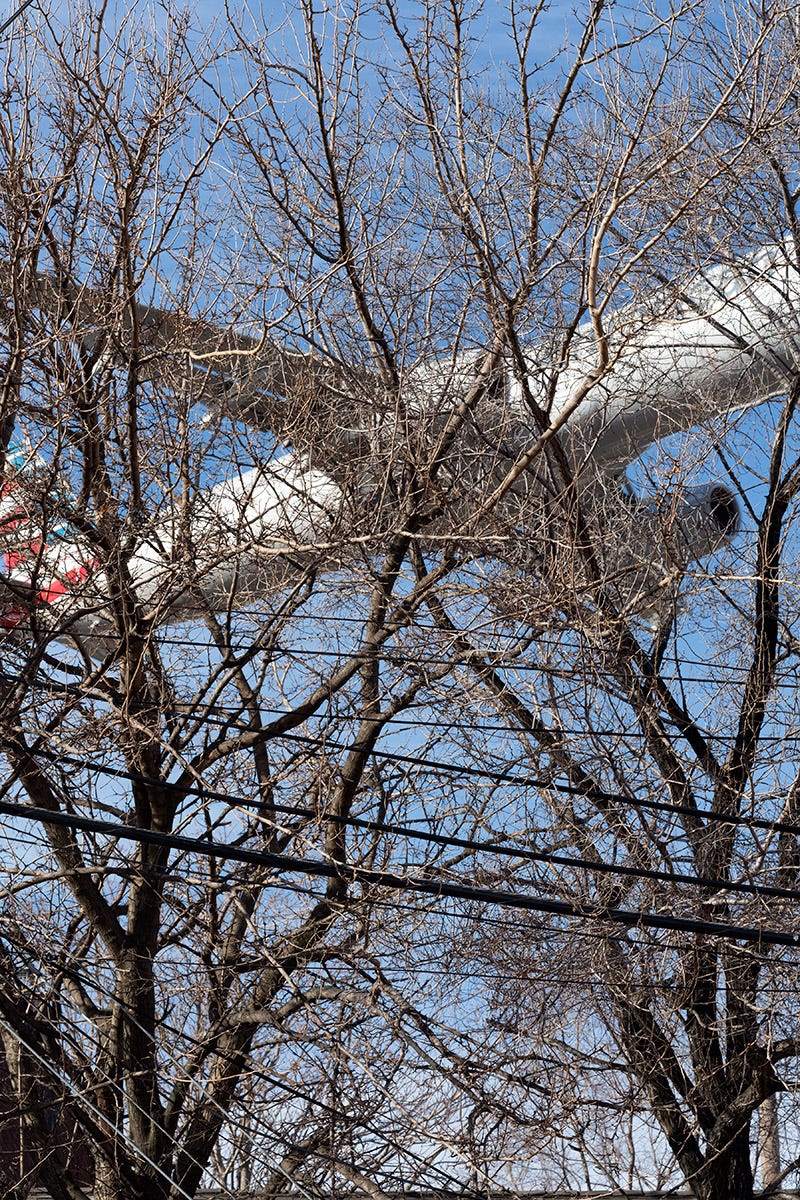


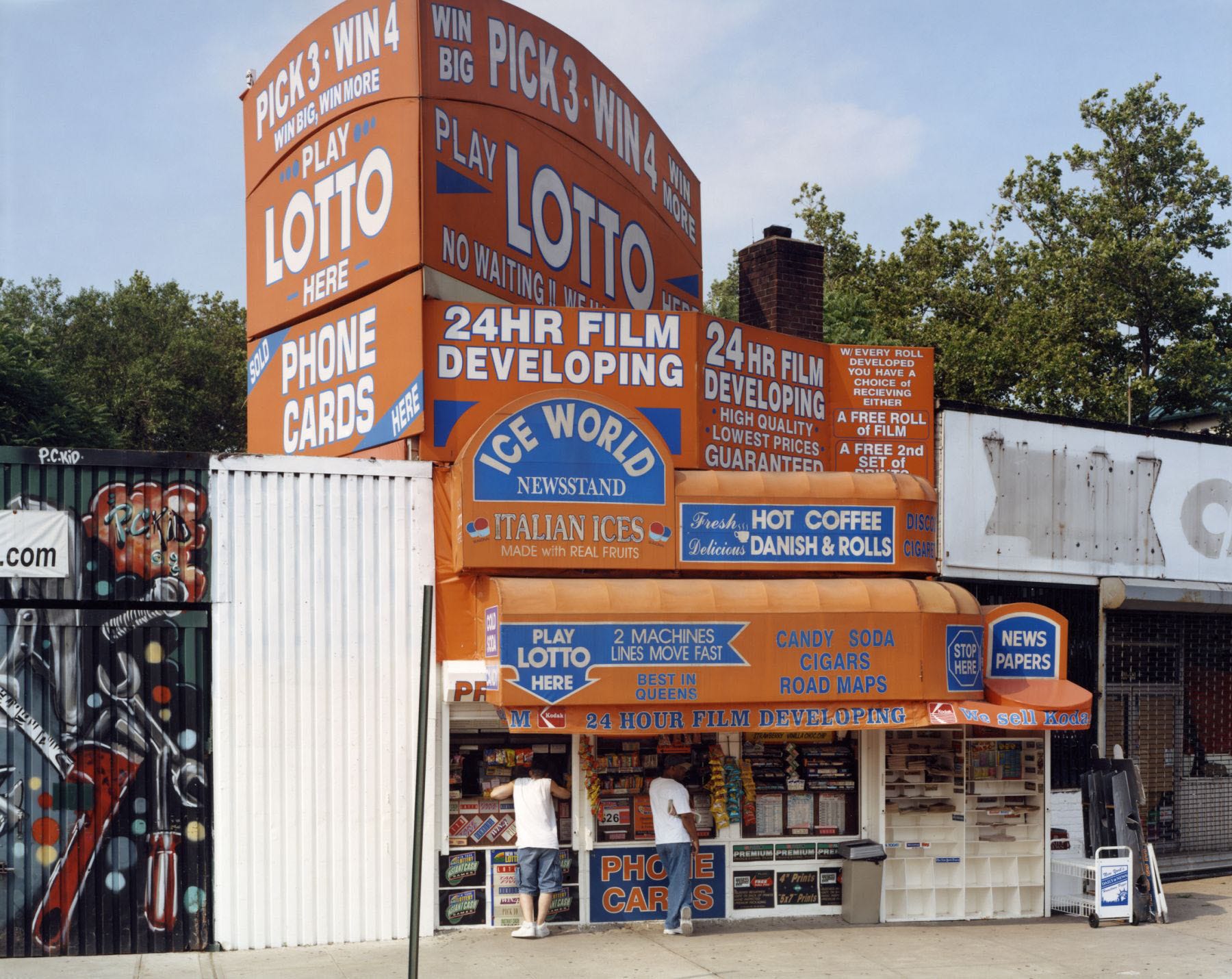
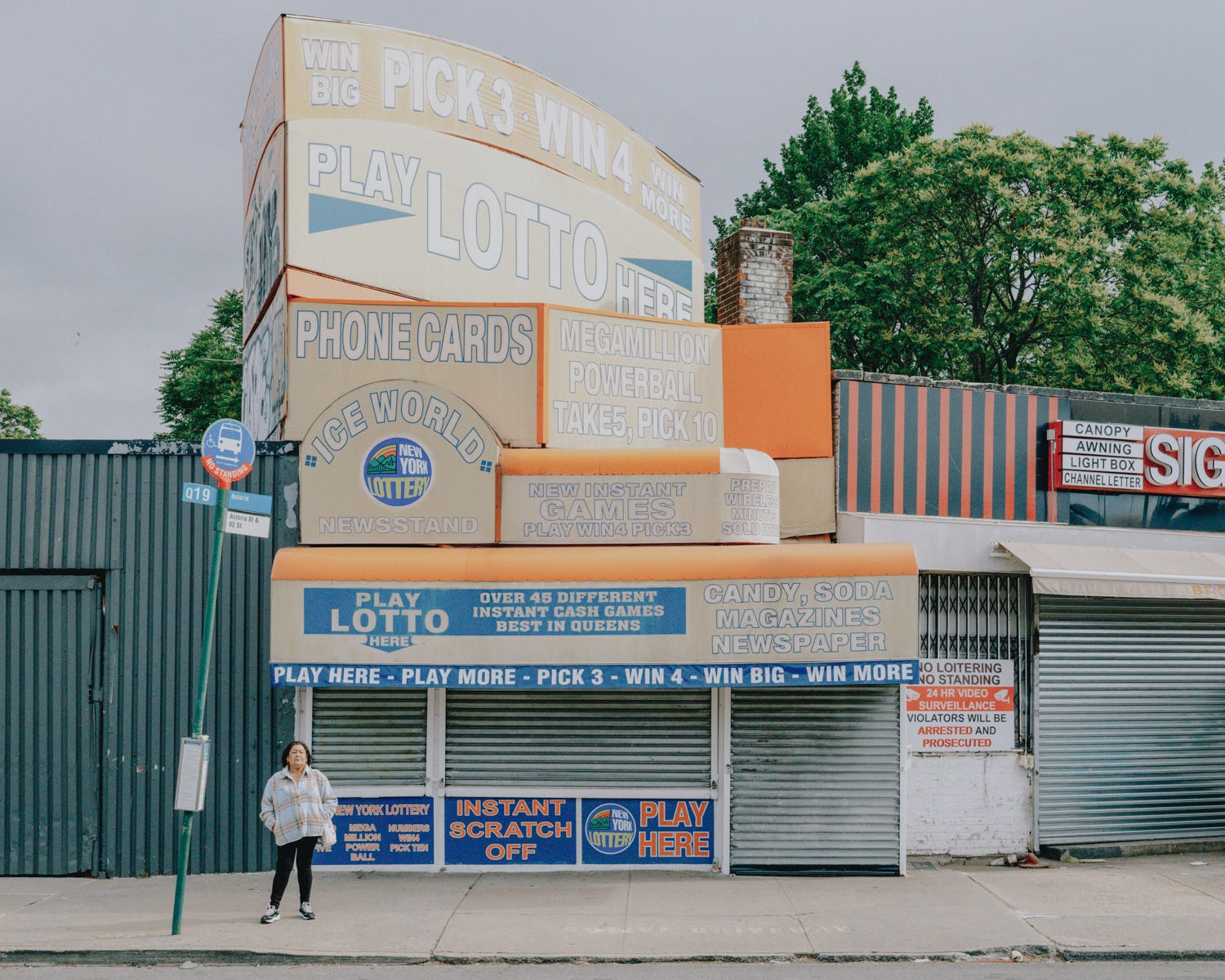
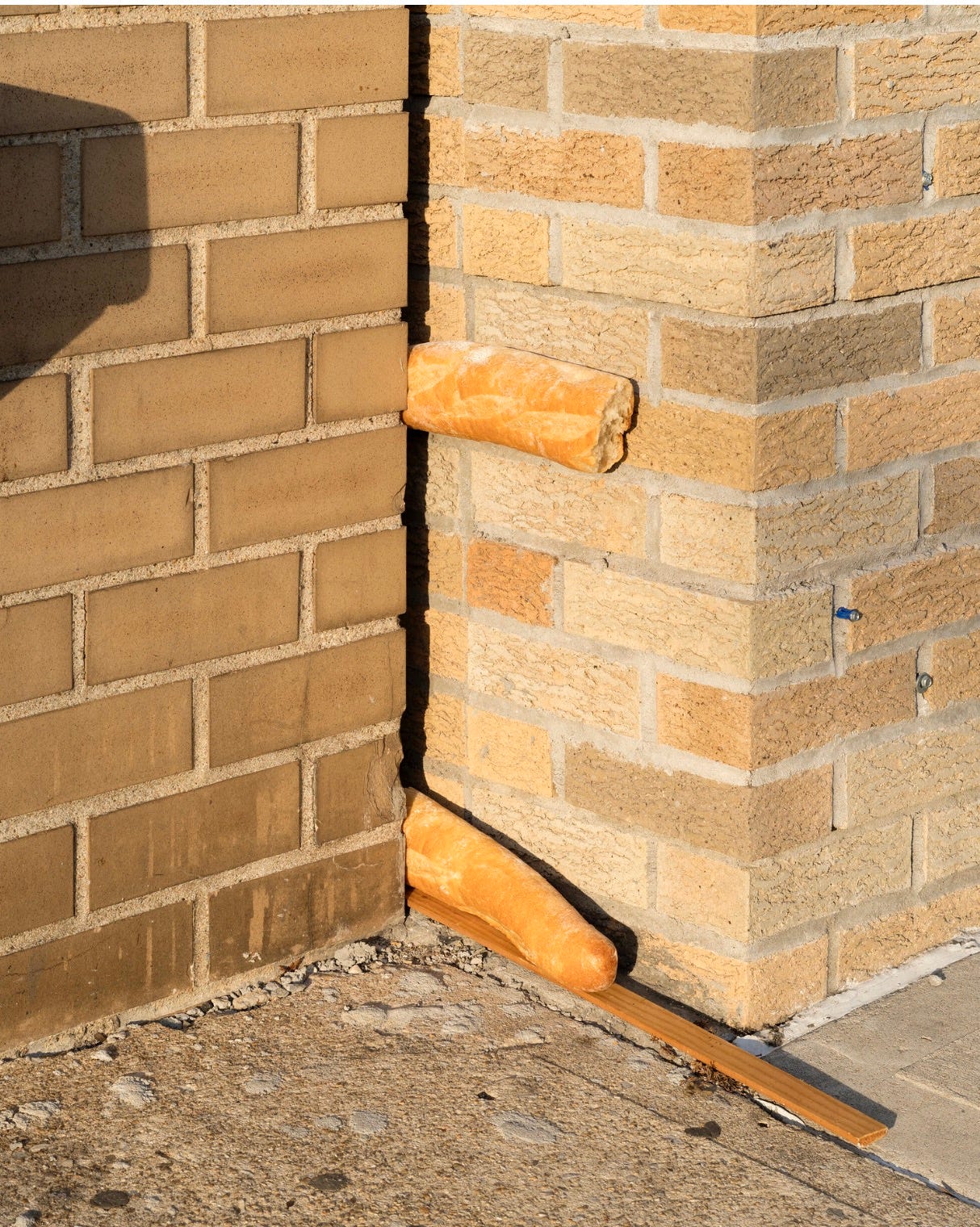
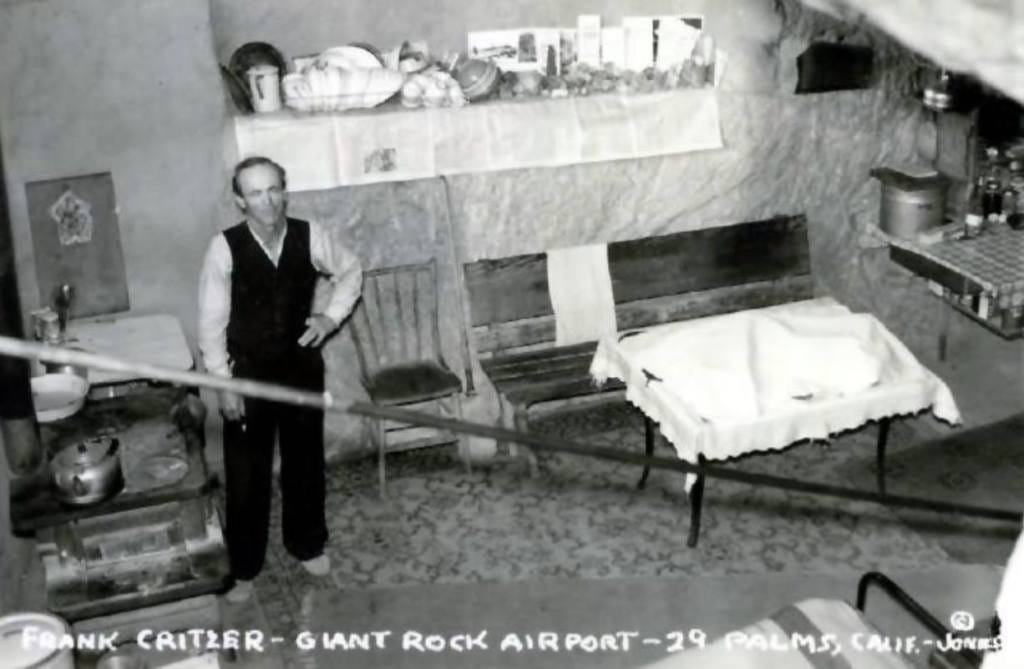

this might have been my favorite of your outstanding series so far!!! so good
I did a story for my old WSJ column looking into why there still so many xxx theaters and peep show places in NYC now that anyone could get all the porn they wanted at home. The answer--glory holes! It was the only column I ever wrote for the paper that got quashed.